Shiplap walls offer a perfect blend of rustic charm and modern sophistication for entryways. Whether you prefer a clean, white aesthetic or a bold, contrasting design, shiplap accent walls can transform the first impression of your home. From full-height installations to half-wall treatments, integrating shiplap with storage solutions, seating, and lighting can enhance both functionality and style. Below are 20 detailed entryway ideas, each exploring a unique way to incorporate shiplap into your foyer or mudroom, with practical tips and inspiration drawn from leading design sources.
1. Classic White Full Shiplap Accent Wall
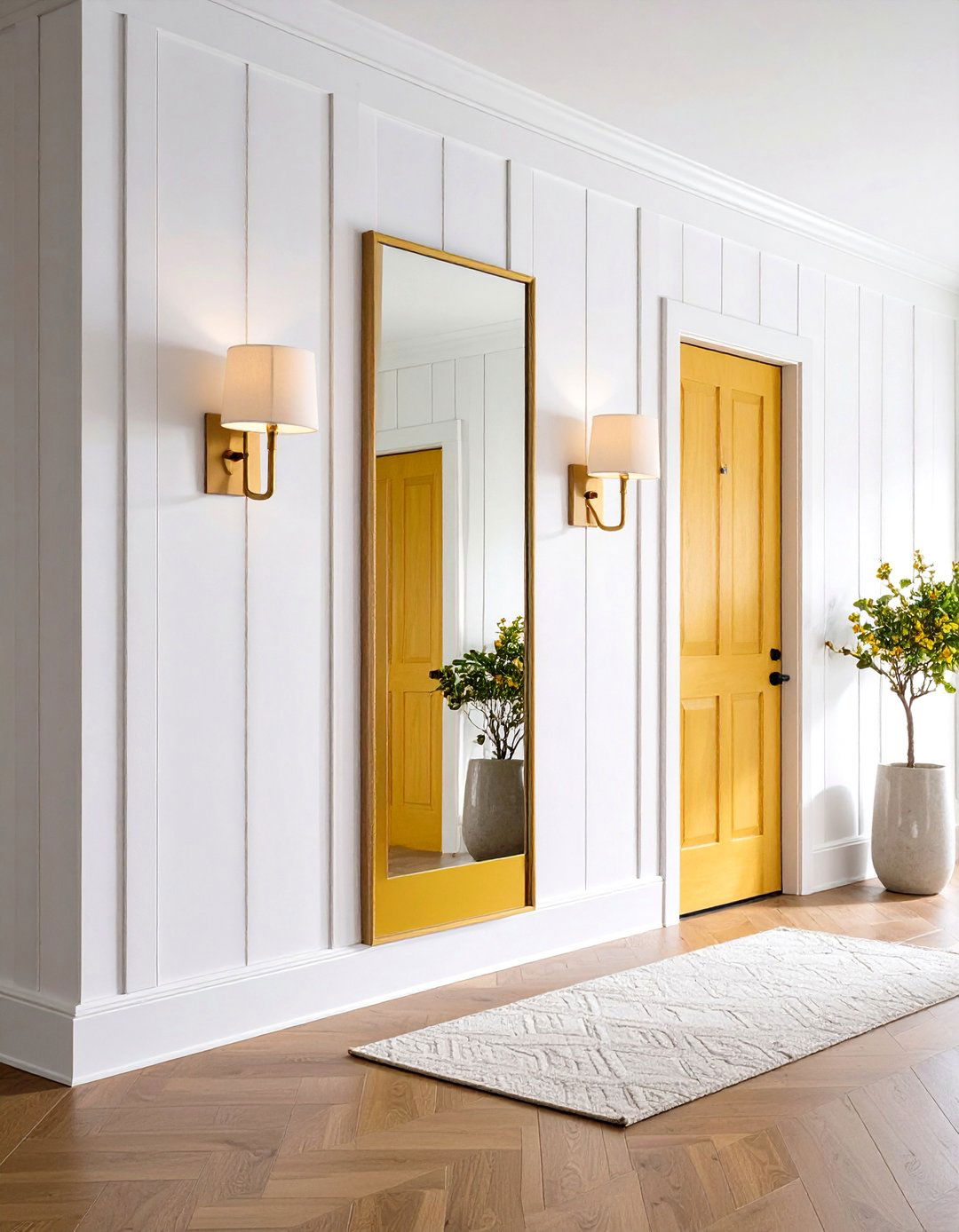
A full-height shiplap wall painted in crisp white creates a timeless focal point that brightens any entryway. White shiplap enhances natural light, making small foyers feel more spacious and inviting. This clean, neutral backdrop complements a variety of decor styles—from coastal to modern farmhouse—allowing homeowners to easily change accent furniture or wall art without repainting the wall. Maintenance is straightforward: occasional dusting and touch-ups keep the white planks looking fresh. Pair with simple wall sconces or a statement mirror to complete the polished look.
2. Half-Wall Shiplap with Wainscoting

Installing shiplap on the lower half of the wall combines texture and tradition. This half-wall treatment, often paired with a contrasting paint color above, provides visual interest while protecting walls from scuffs and scratches. The chair-rail trim at the top of the shiplap adds a refined detail, blending the warmth of wood paneling with classic wainscoting. Ideal for busy households, this design balances durability and style. Above the trim, a soft neutral or bold hue can highlight shiplap’s linear pattern, anchoring hooks or coat racks for added functionality.
3. Dramatic Dark Painted Shiplap
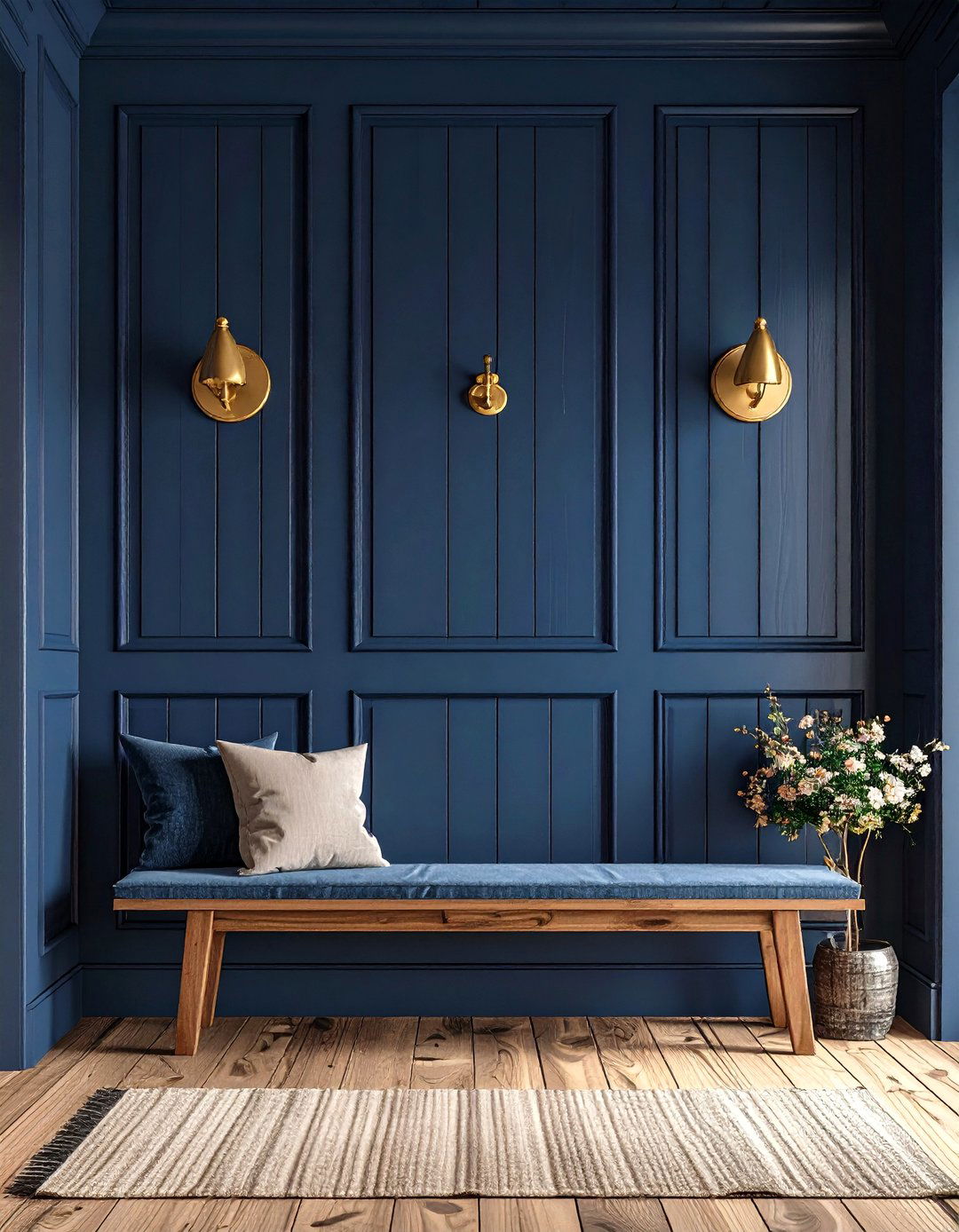
For a striking, moody entryway, choose a deep charcoal or navy paint for your shiplap wall. Dark shiplap adds depth and contrast, making accent pieces like brass hooks or a wooden bench pop against the backdrop. This dramatic approach suits modern and industrial styles, giving a small foyer an intimate, cocoon-like feel. To prevent the space from feeling too enclosed, incorporate ample lighting—recessed ceiling lights or sleek sconces—to highlight the texture of the boards. Regular cleaning with a soft cloth keeps the dark finish looking sophisticated.
4. Mixed Horizontal and Vertical Patterns
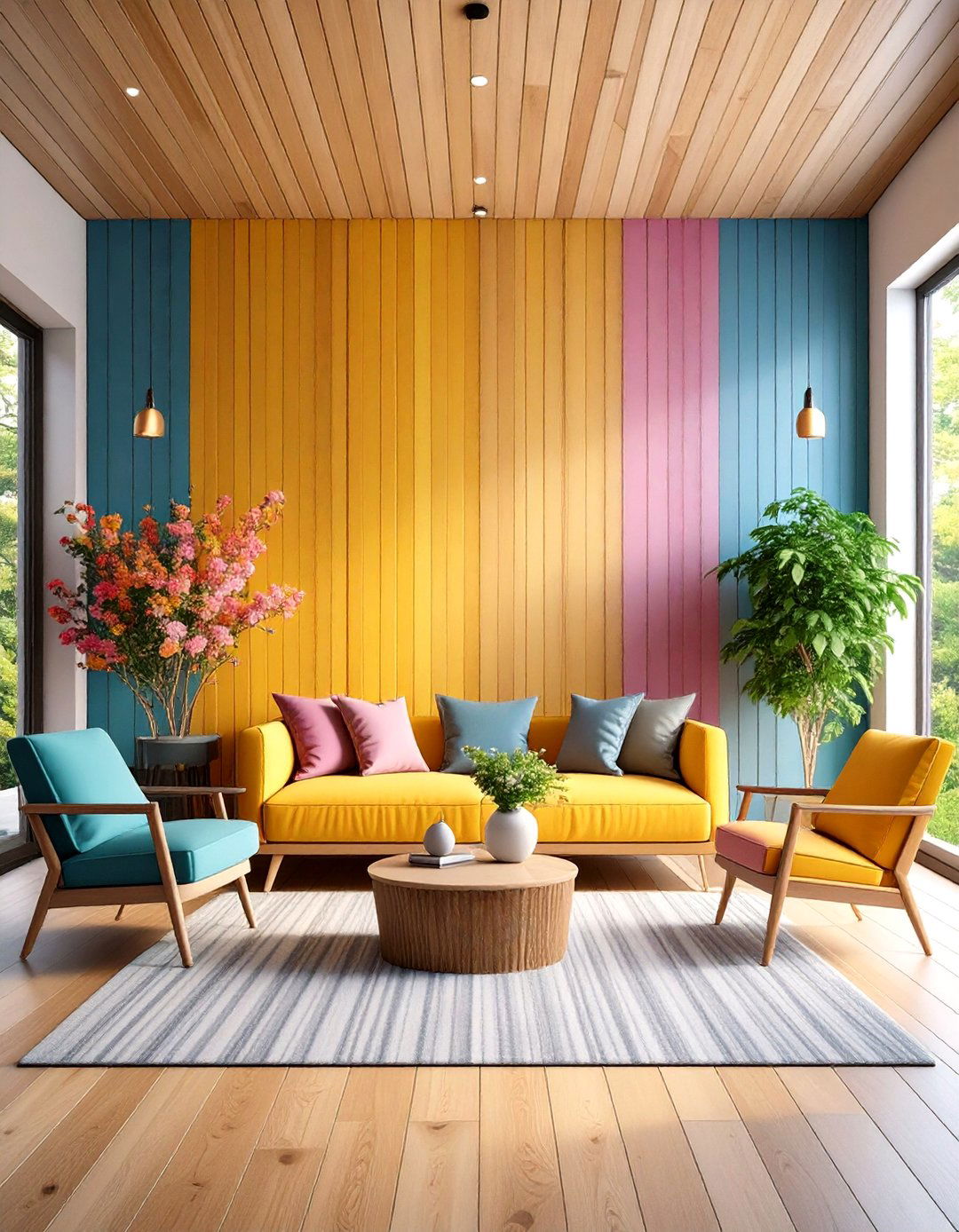
Combine horizontal and vertical shiplap boards to create a dynamic visual effect. Alternating orientations in sections—such as vertical on the lower half and horizontal above—adds architectural interest and can emphasize ceiling height. This pattern mix works especially well in larger entry halls, where distinct zones (like seating areas or coat storage) benefit from subtle delineation. To maintain cohesion, use the same plank width and finish for both orientations. The resulting interplay of lines draws the eye upward, making the foyer appear taller and more expansive.
5. Shiplap with Integrated Bench Seating
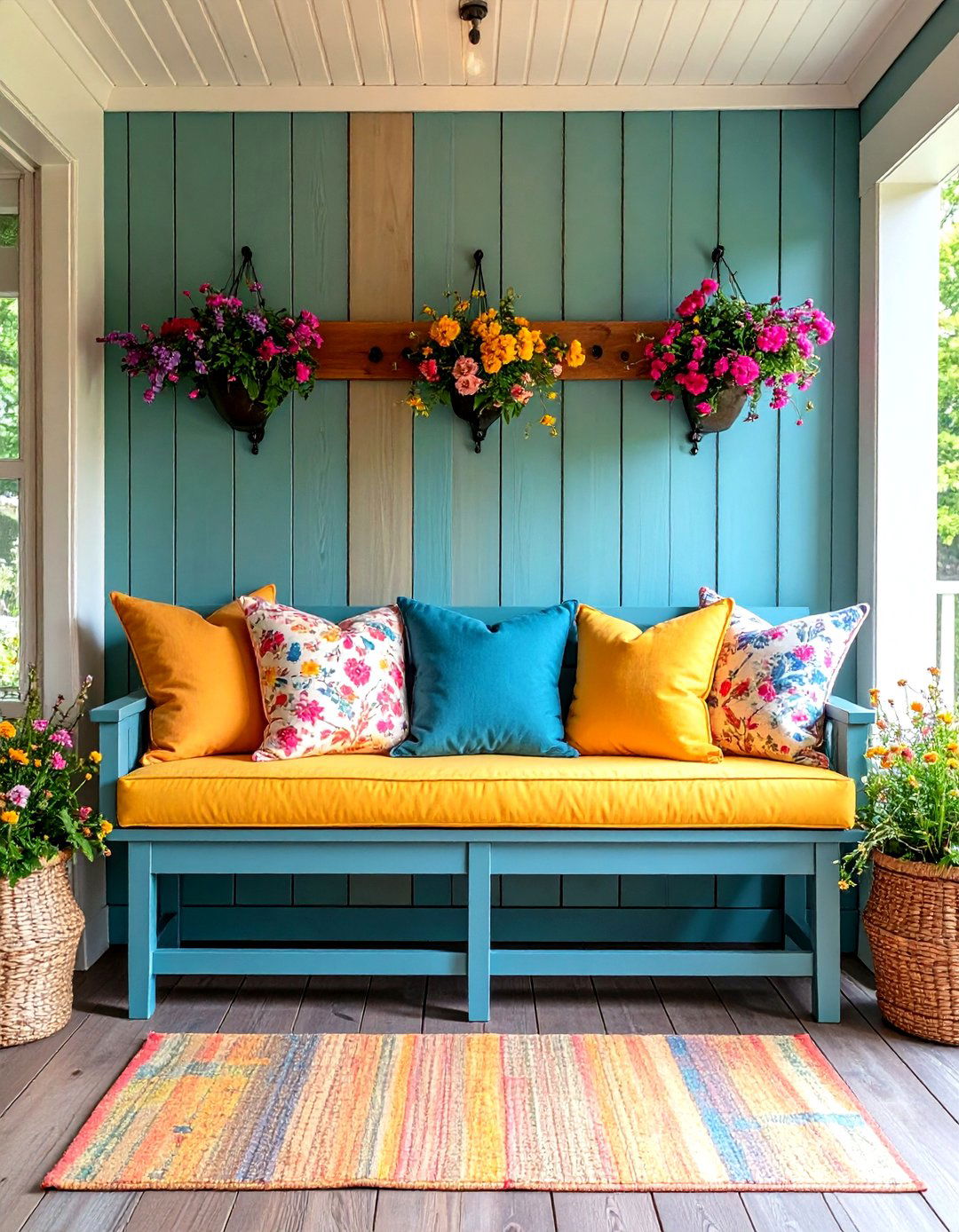
Maximize functionality by extending shiplap into built-in seating. A bench with a shiplap-clad back wall offers both style and storage, as baskets can slide underneath the seat for shoe organization. Paint or stain the bench base in a coordinating color, creating a cohesive vignette. Above, install decorative hooks against the shiplap for hanging coats and bags. This seamless design blurs the line between furniture and wall, making the entryway feel custom-crafted. Cushioned bench pads and throw pillows add comfort and a pop of color.
6. Floating Shelves and Hook Rails
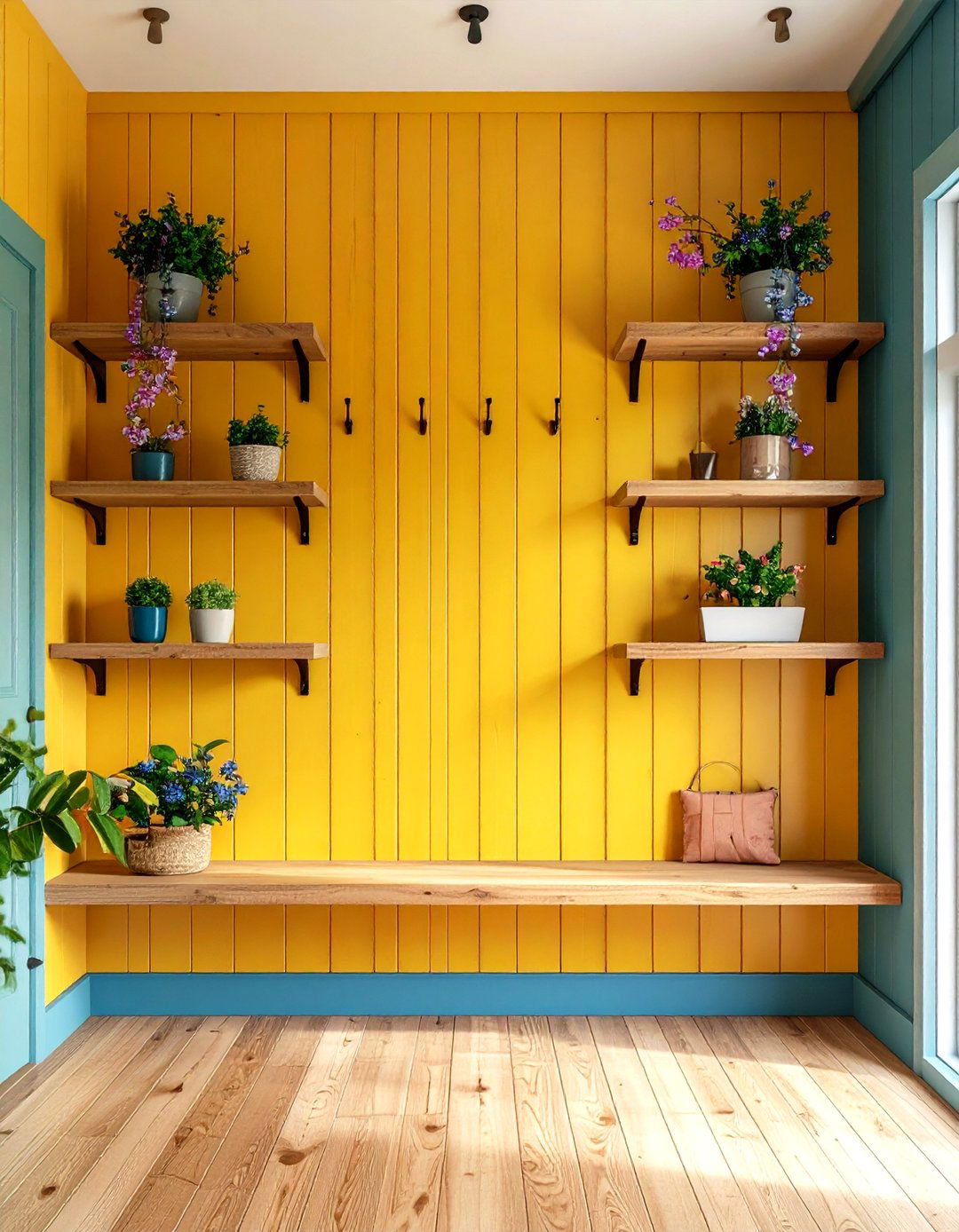
Accent a shiplap wall with floating shelves and sequential hook rails for an adaptable entryway solution. The horizontal grooves of the shiplap serve as a natural backdrop, while minimalist wooden shelves and metal hooks float unobtrusively. This open design promotes airiness and provides display space for decor, keys, or mail. To maintain balance, space hooks evenly and align shelves flush with plank edges. For smaller foyers, slim-profile hooks and narrow shelves prevent overcrowding. The result is a functional yet airy composition that keeps essentials within reach.
7. Reclaimed Wood Shiplap Accent
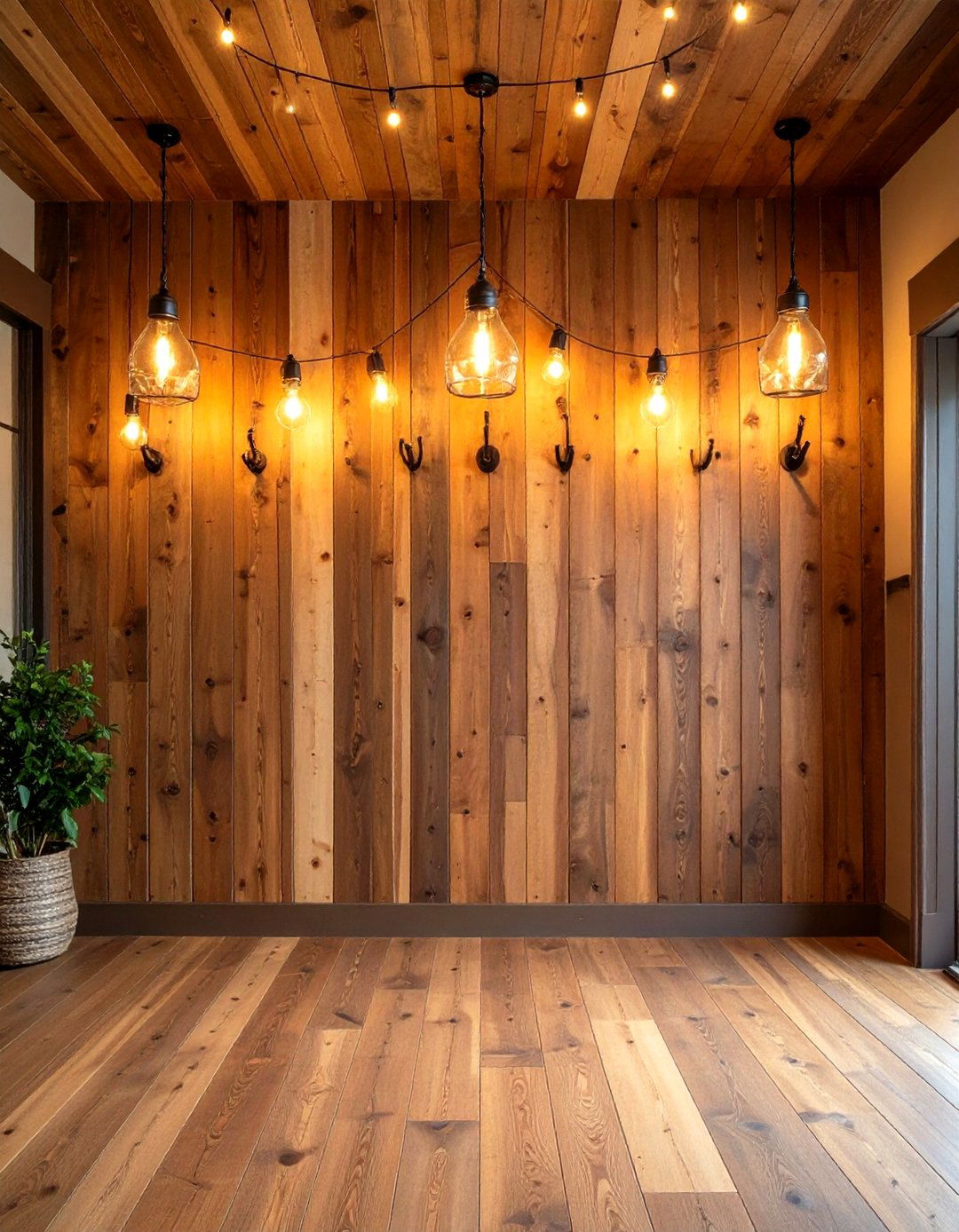
Incorporate reclaimed or weathered planks for a rustic, textural entryway wall. The natural grain variations and patina of reclaimed wood lend authenticity and warmth, ideal for country-inspired or eclectic interiors. Install planks in their original width and irregular lengths for an organic feel, secured over a backing board for stability. Seal with a clear matte finish to preserve character while protecting against dust. Pair with industrial-style lighting or wrought-iron hooks to accentuate the reclaimed aesthetic. This eco-friendly option adds a storied dimension to any entry.
8. Seamless Tongue-and-Groove Shiplap
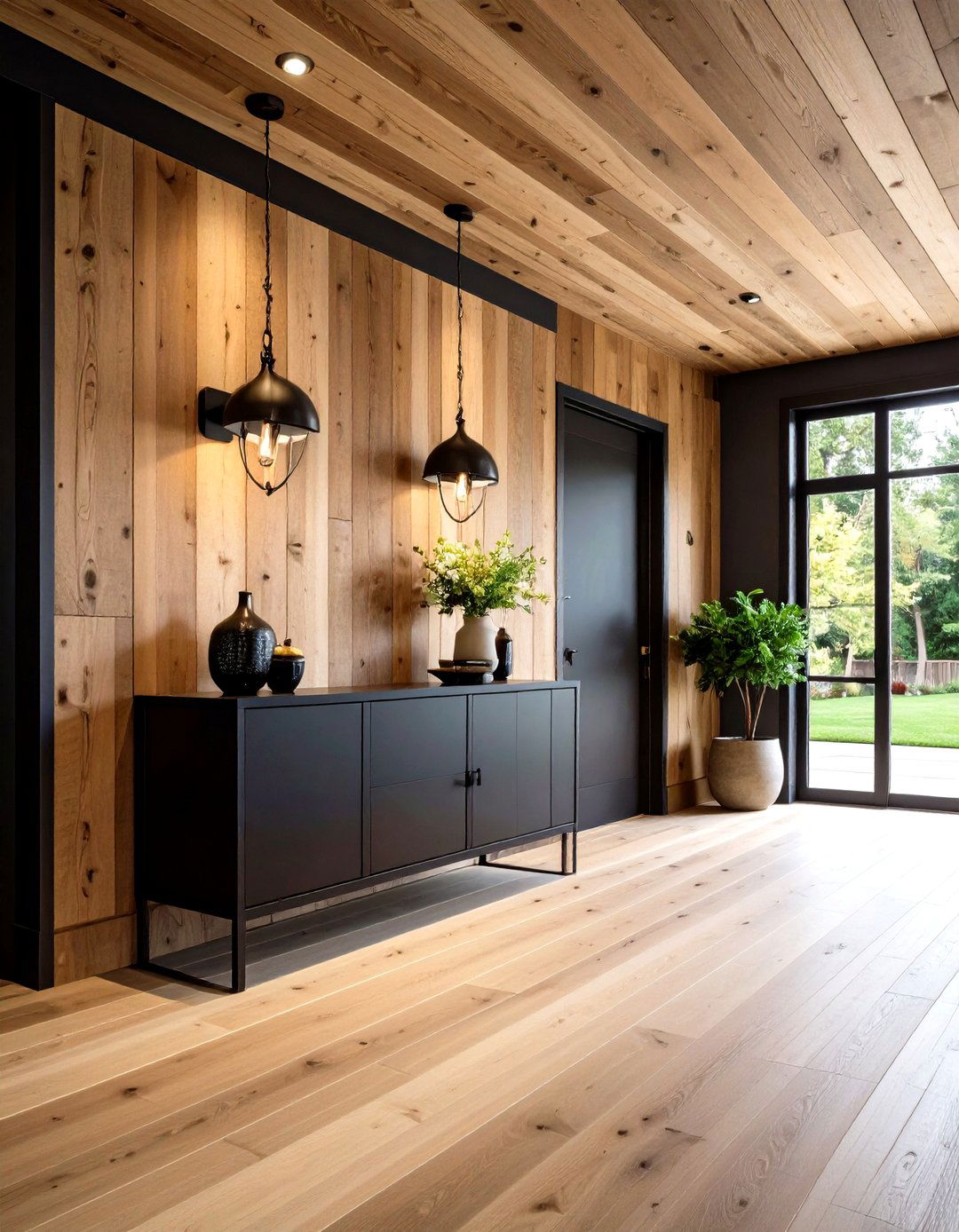
Choose tongue-and-groove boards for a perfectly flush shiplap installation without visible gaps. This method results in a sleek, continuous surface that highlights the wood’s natural texture. Ideal for modern or minimalist entryways, tongue-and-groove planks can be stained or painted. Because boards lock together, expansion and contraction are minimized, reducing crack formation. Finish with high-quality nails and caulk for a polished look. This seamless approach accentuates light play on the wood surface, adding depth and sophistication to the entry.
9. Picture Ledge Gallery on Shiplap
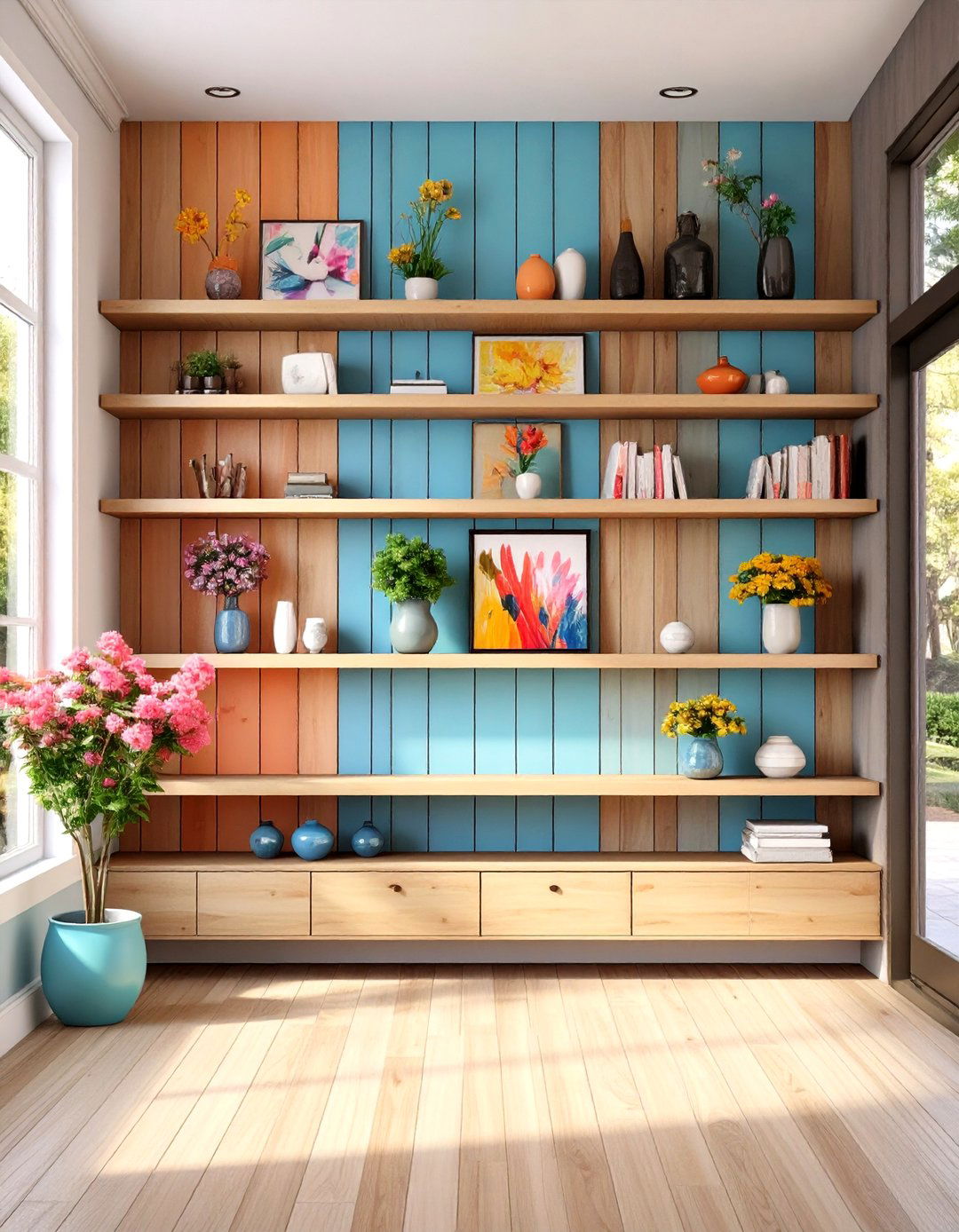
Transform a shiplap wall into a rotating gallery by adding slim picture ledges. The horizontal planks naturally guide the eye and provide a stable foundation for multiple ledges at varying heights. Display framed art, family photos, or seasonal décor without damaging the wood—simply slide items along the ledges. For cohesive styling, choose frames that echo the entry’s trim or furniture finish. This versatile solution lets you refresh your wall art frequently, keeping the entryway’s personality dynamic and engaging.
10. Hidden Storage Cubbies Behind Shiplap
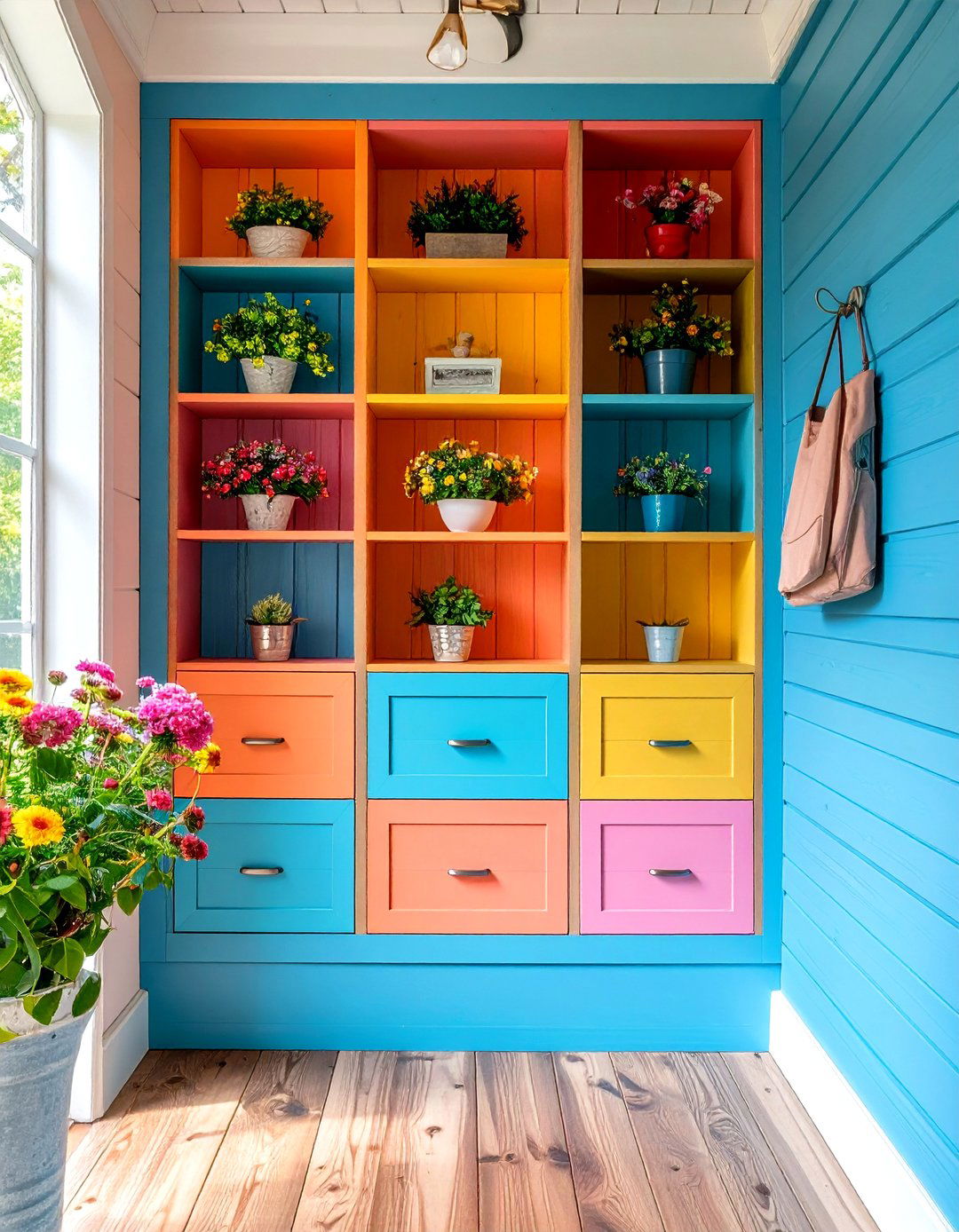
Integrate recessed cubbies within your shiplap wall for concealed storage. Build shallow niches between studs, then cover the face with removable shiplap panels that blend seamlessly with the wall. Behind these panels, you can stow mail, keys, or seasonal accessories. Label each panel discreetly or use magnetic catches for easy access. When closed, the cubbies maintain a uniform shiplap façade, preserving the entry’s clean aesthetic. This clever approach maximizes utility in narrow hallways or compact mudrooms where traditional cabinets might overwhelm the space.
11. Full-Length Mirror Framed in Shiplap

Frame a floor-to-ceiling mirror with shiplap planks to create depth and reflect light in small entryways. Install the mirror flush against the wall, then surround it with a shiplap “picture frame” molding. The reflective surface doubles the perceived size of the entry, while the textured frame adds warmth. Keep the plank edges crisp and the paint uniform for a modern look, or distress the frame for a vintage vibe. Accent with an overhead pendant light to bounce illumination across the space, enhancing brightness.
12. Vertical Shiplap for Height Illusion
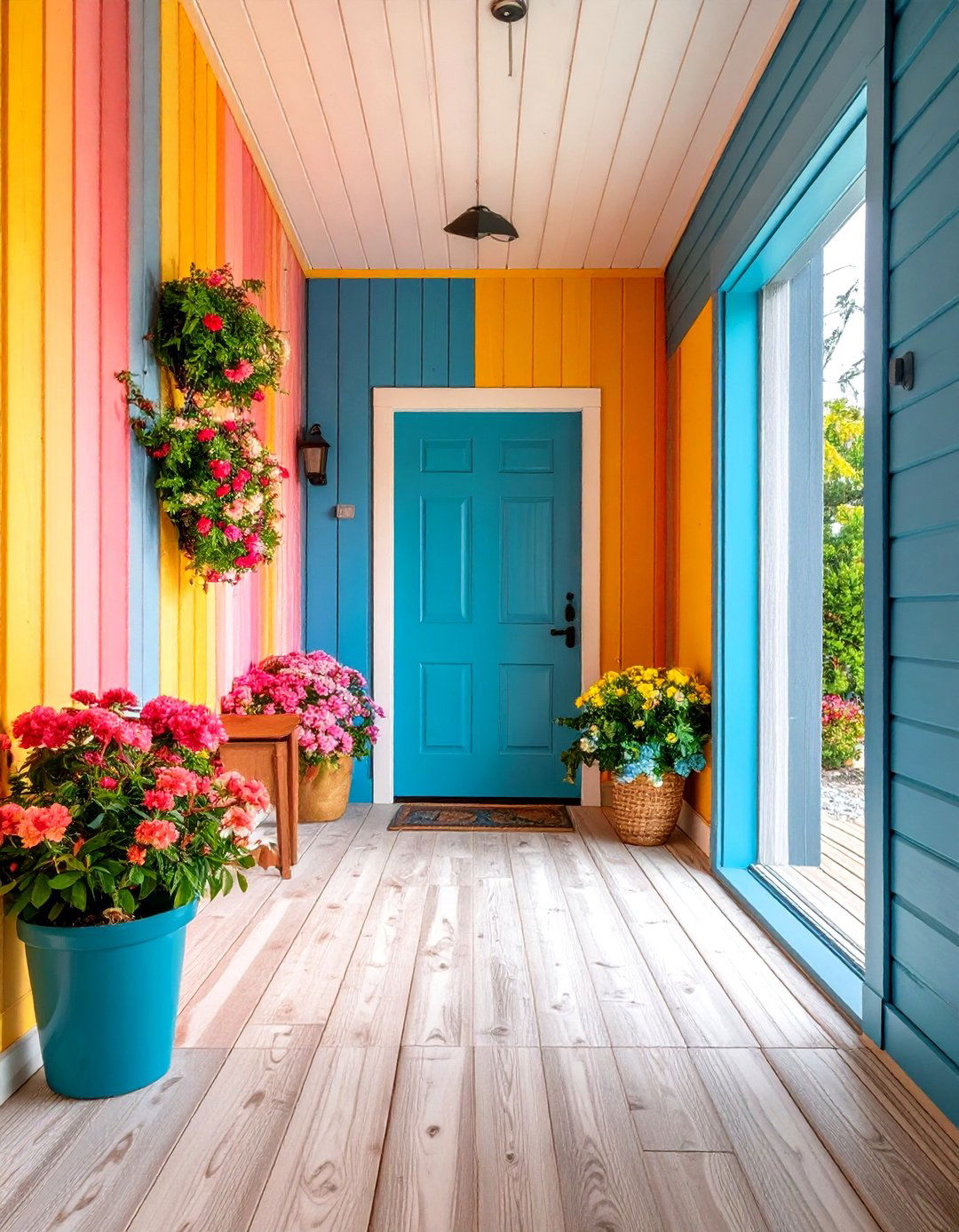
Run shiplap boards vertically from floor to ceiling to visually raise low ceilings. The uninterrupted vertical lines draw the eye upward, creating an illusion of height. This orientation works exceptionally well in low-ceilinged hallways or basement entryways. Opt for light-colored paint to amplify the effect, and use narrow planks to accentuate the linearity. Balance the bold vertical pattern with horizontal elements—such as a bench seat or rug—to ground the design. The result is an airy, uplifting entry that feels more spacious than its actual dimensions.
13. Two-Tone Shiplap Accent Wall
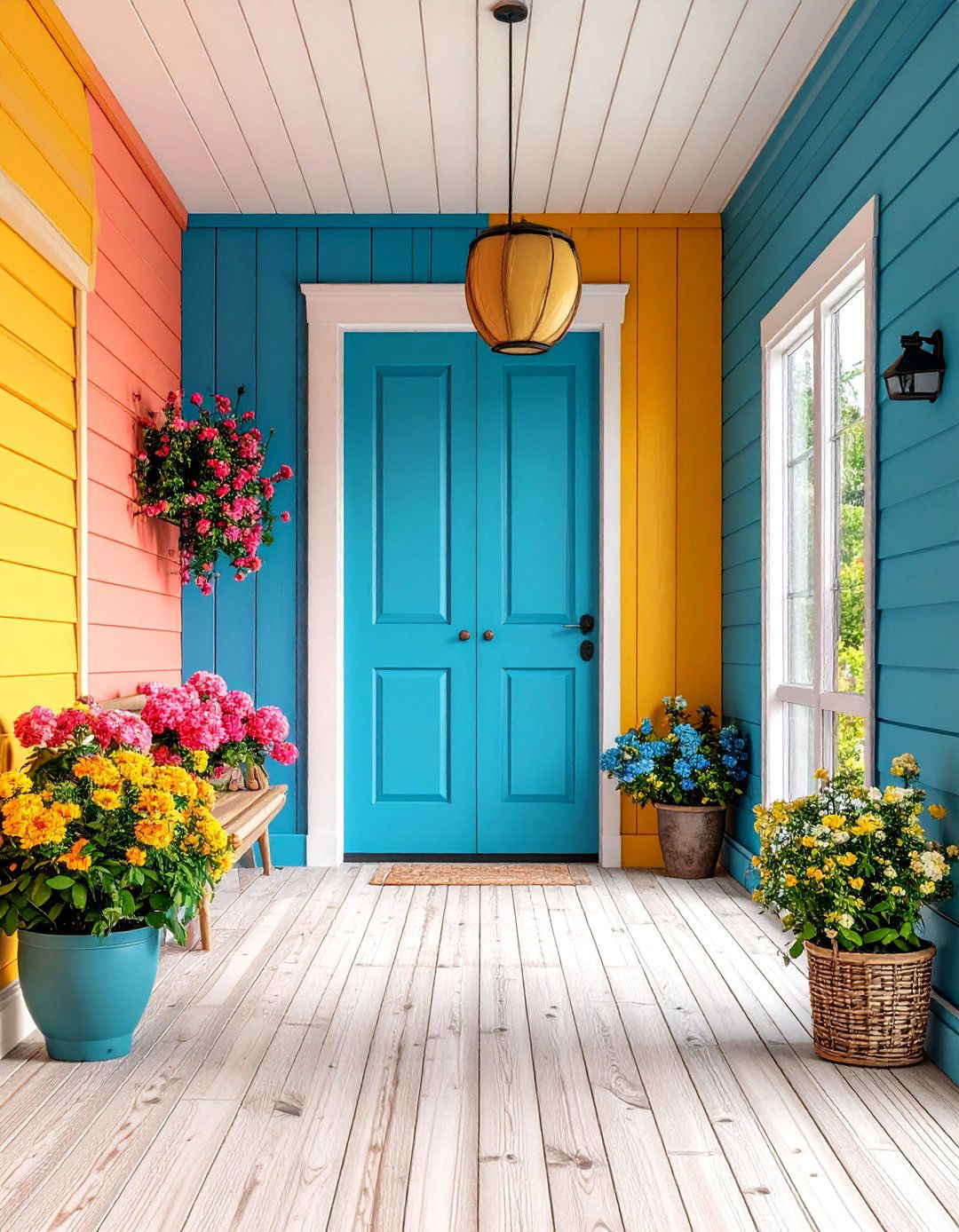
Paint the top and bottom halves of your shiplap wall in contrasting colors for a two-tone effect. Divide the wall with a slim trim or simply stop and start the paint at a defined plank joint. For example, pair a neutral gray on the lower half with a soft pastel above to create depth, or use bold navy below and crisp white above for high-contrast drama. This approach allows you to incorporate multiple hues without overwhelming the space. The shiplap’s grooves add subtle texture, enhancing color transitions.
14. Contrasting Mortar-Style Lines
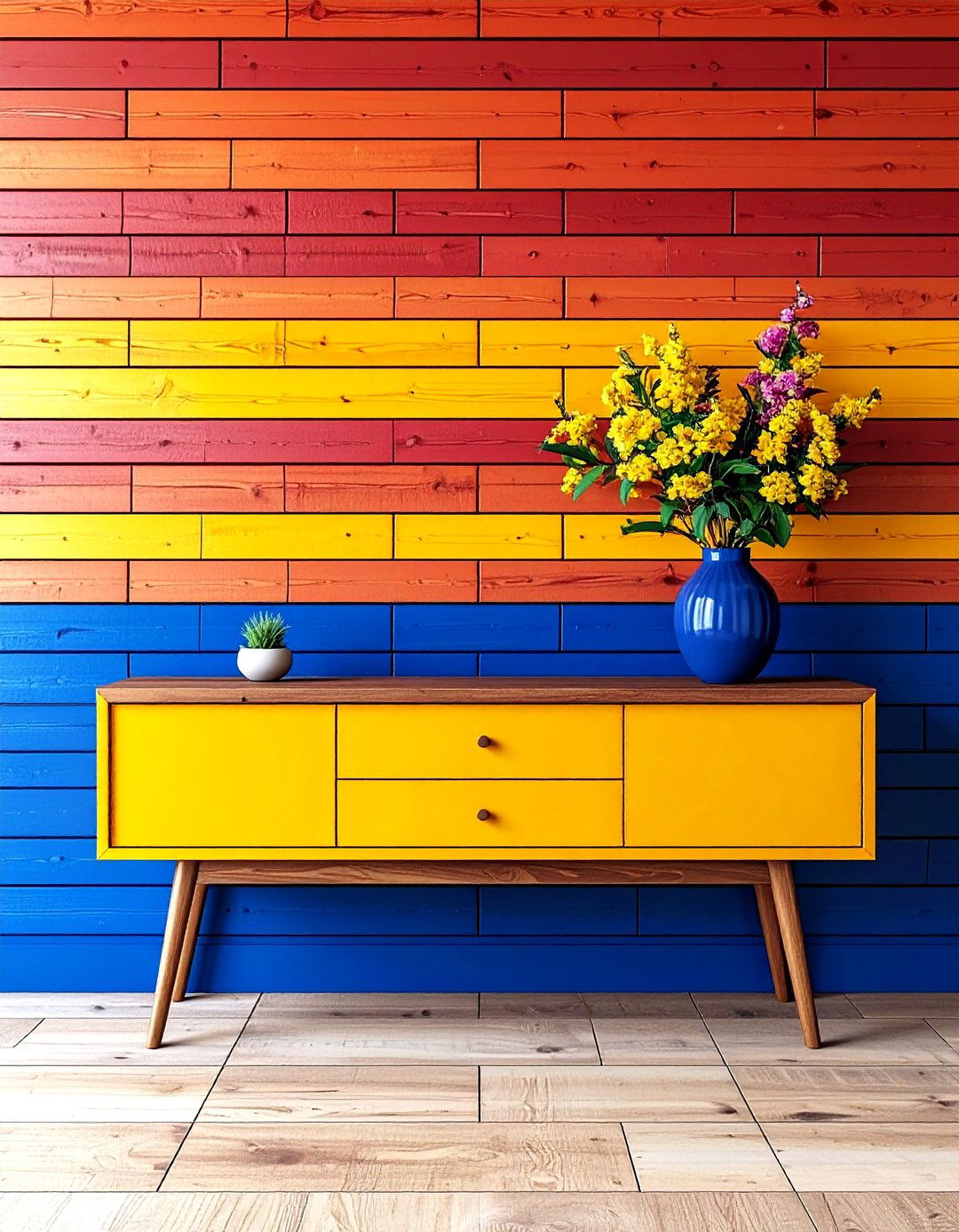
Emulate a brick wall by filling shiplap grooves with a contrasting grout or caulk color. Apply a thin bead of dark gray or charcoal caulk into each gap, then wipe the surface for a clean, mortar-joint effect. Once dry, paint the planks in white or a light hue, leaving the dark lines visible. The result is a modern graphic statement that mimics brick or tile. This technique works well behind console tables or benches, providing a textured backdrop that elevates minimalist furniture.
15. Rustic Stained Shiplap Wall
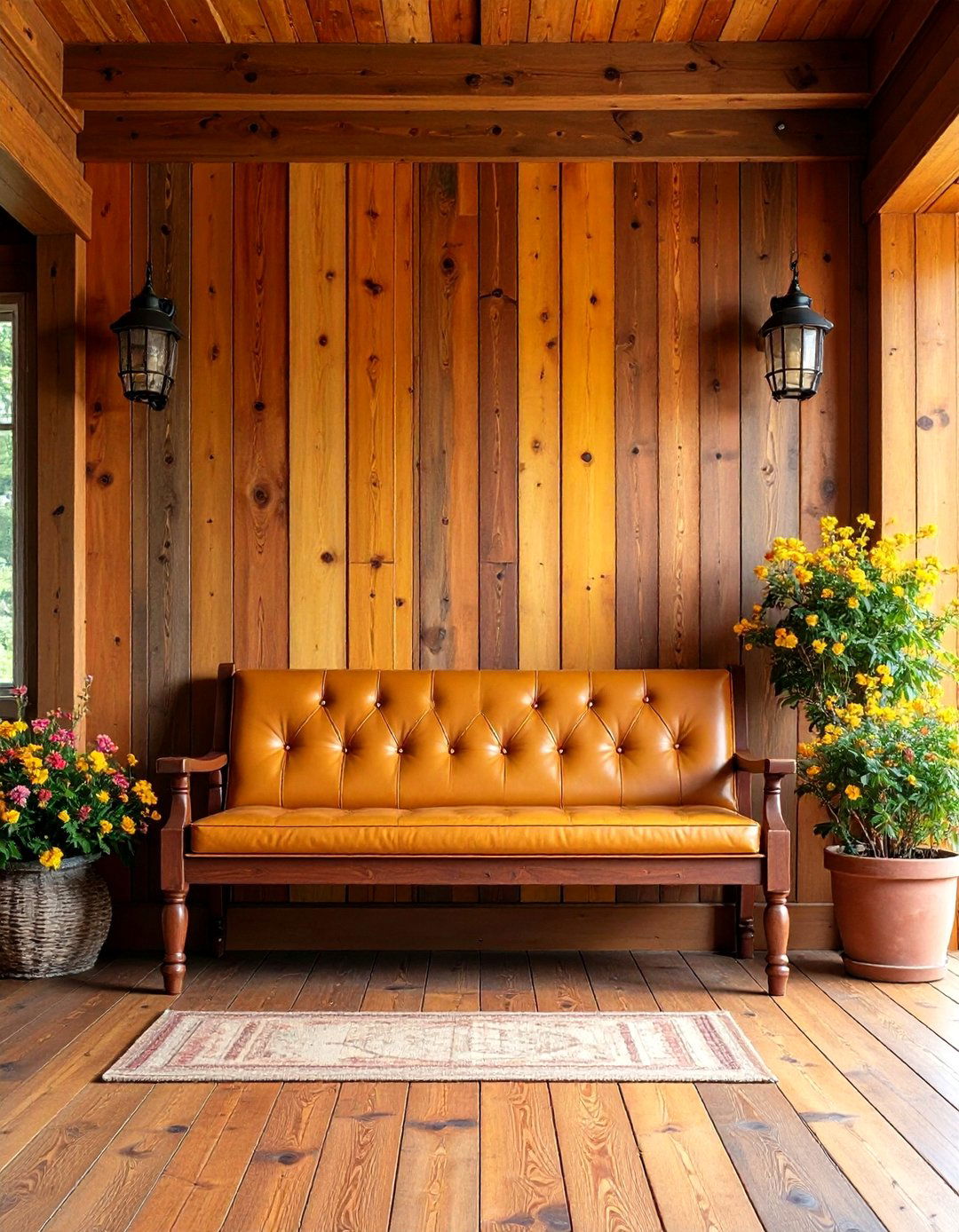
Showcase the natural beauty of wood by staining shiplap instead of painting. A warm honey or deep walnut stain enhances the grain, offering a cozy, lodge-inspired entryway. After installing the planks, apply two coats of oil-based stain, wiping off excess for an even finish. Seal with a matte clear coat to protect against moisture and wear. Pair stained shiplap with wrought-iron hooks and a leather bench for a rich, textural contrast. This approach celebrates wood’s inherent character, perfect for rustic or transitional homes.
16. Integrated LED Lighting in Shiplap
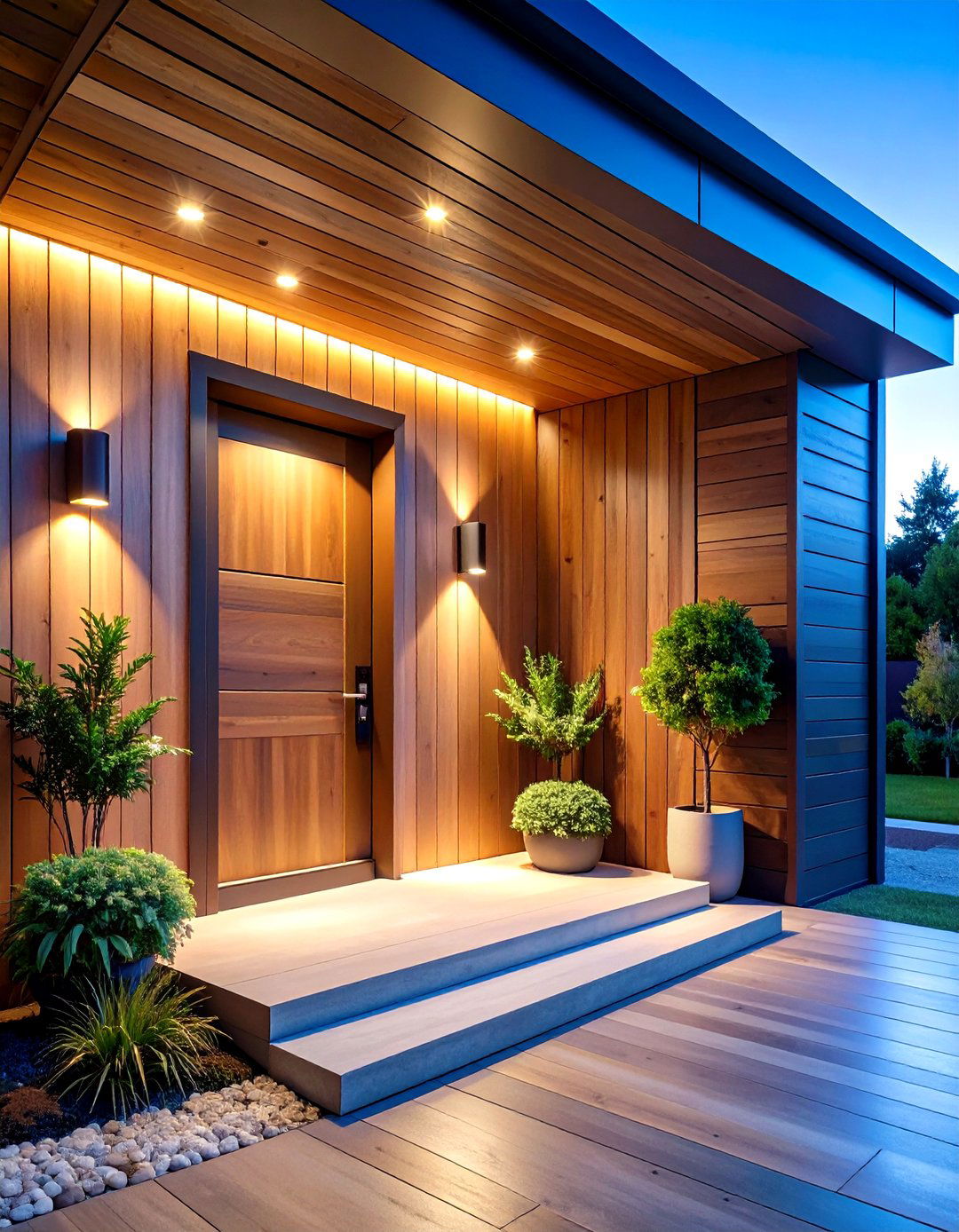
Embed LED strip lighting behind the top edge of a shiplap wall for ambient illumination. The hidden lighting highlights the plank texture and washes the wall in a soft glow. Install a narrow channel at the wall’s crown molding, tucking the fixture out of sight. Choose warm white LEDs for a welcoming atmosphere. This subtle lighting solution replaces or complements traditional sconces, ideal for modern or minimalist foyers. Dimmable drivers give control over brightness, allowing the entry to transition from bright daytime light to gentle evening ambiance.
17. Bench with Baskets Underneath
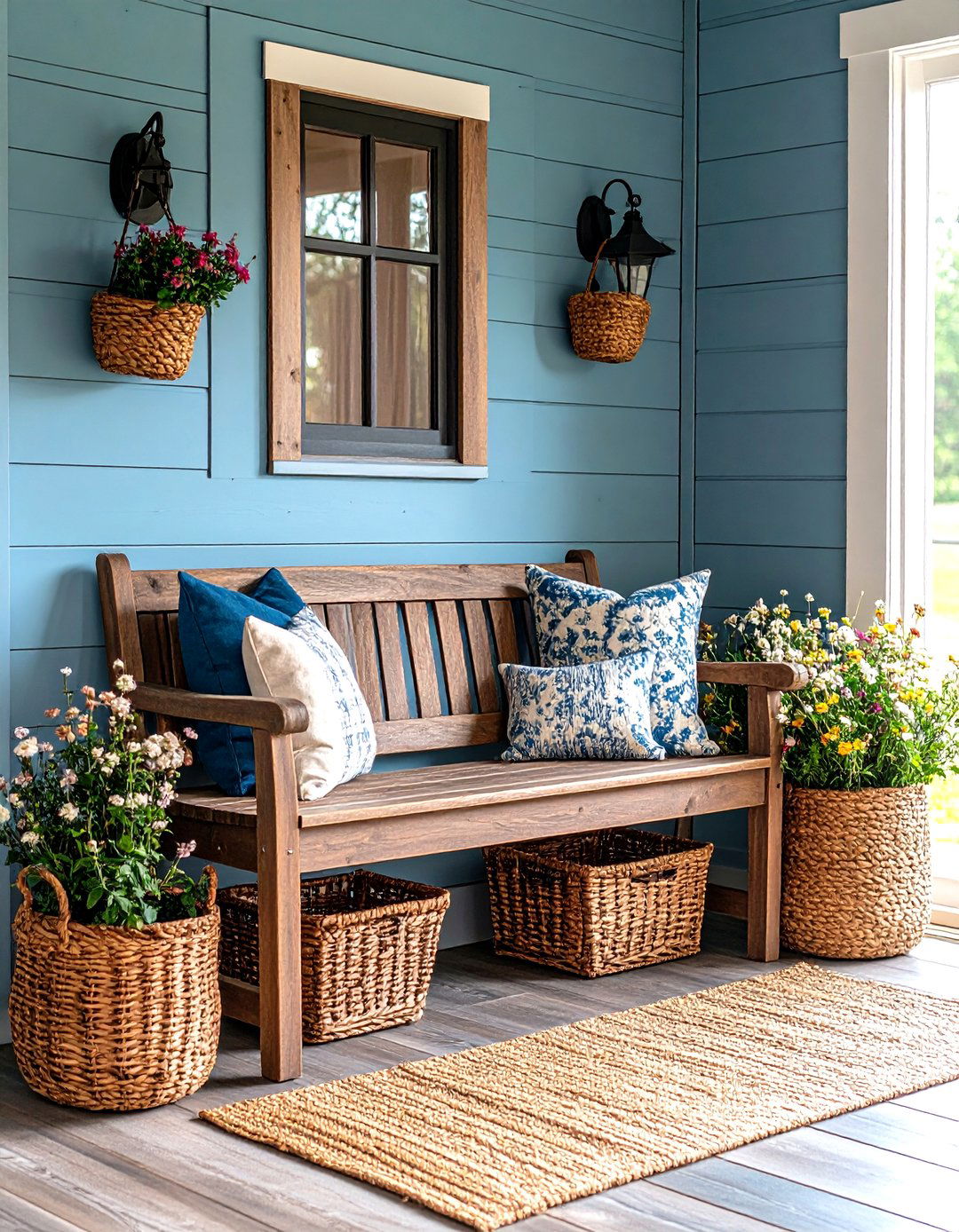
Combine a shiplap-backed bench with wicker baskets beneath for an organized, farmhouse-chic entry. The shiplap wall behind the bench can extend down to form the bench’s back, anchoring it visually. Under the bench, slide baskets for shoes, scarves, or pet leashes. Paint or stain the bench frame in a complementary hue to the shiplap, tying the elements together. Top the bench with a neutral cushion for comfort. This layout provides a dedicated landing zone for everyday items, keeping the entry clutter-free.
18. High-Contrast Black Trim on White Shiplap
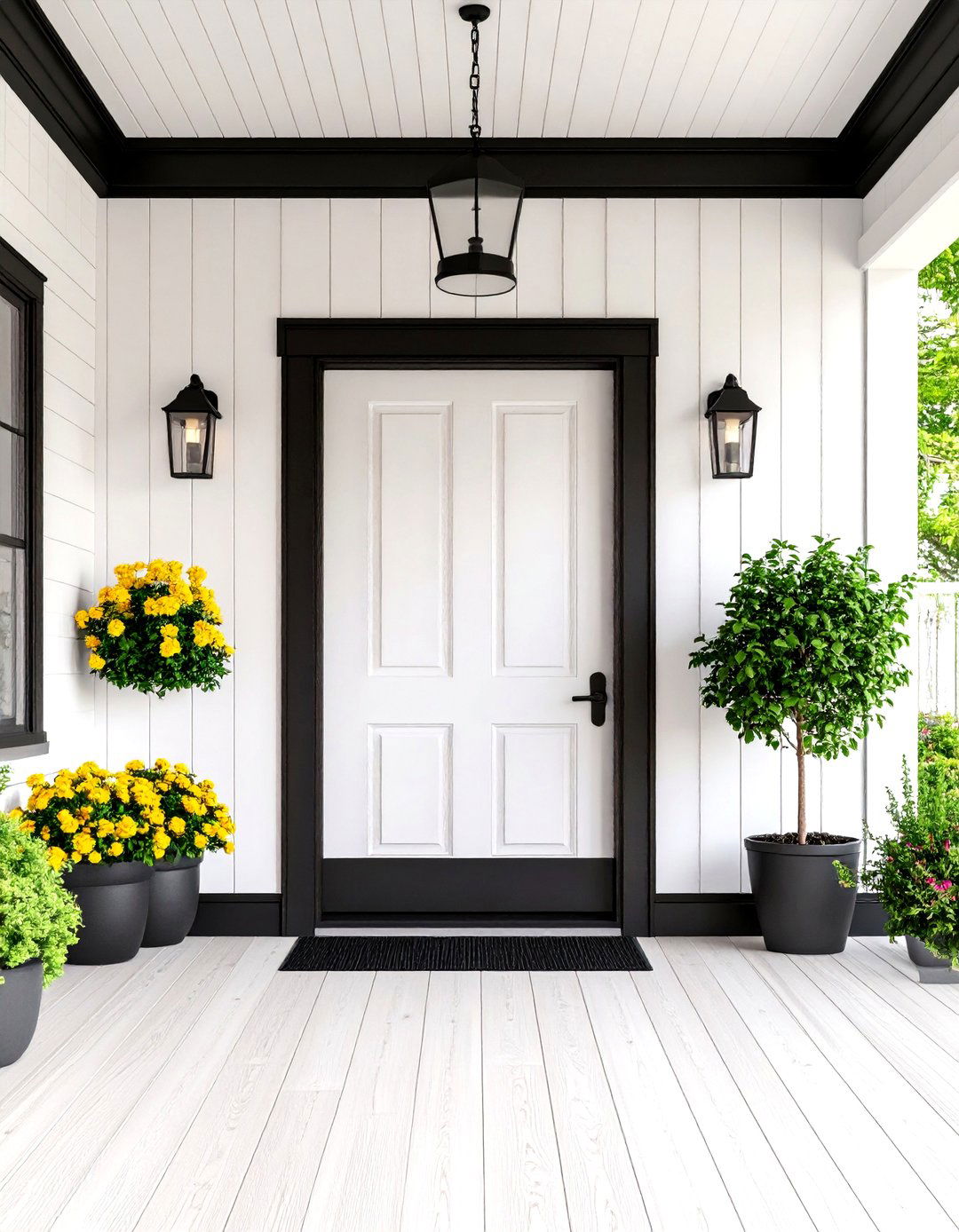
Frame a white shiplap wall with matte black trim for a bold, contemporary aesthetic. The crisp boundary accentuates the wall’s geometry and highlights the shiplap’s texture. Use black-painted wood or metal molding around the perimeter, including around light switches and outlets. This graphic treatment pairs well with monochrome artwork or a black-framed mirror. The sharp contrast creates a gallery-like presentation, elevating even a simple foyer to a statement space.
19. Shiplap with Chalkboard Section
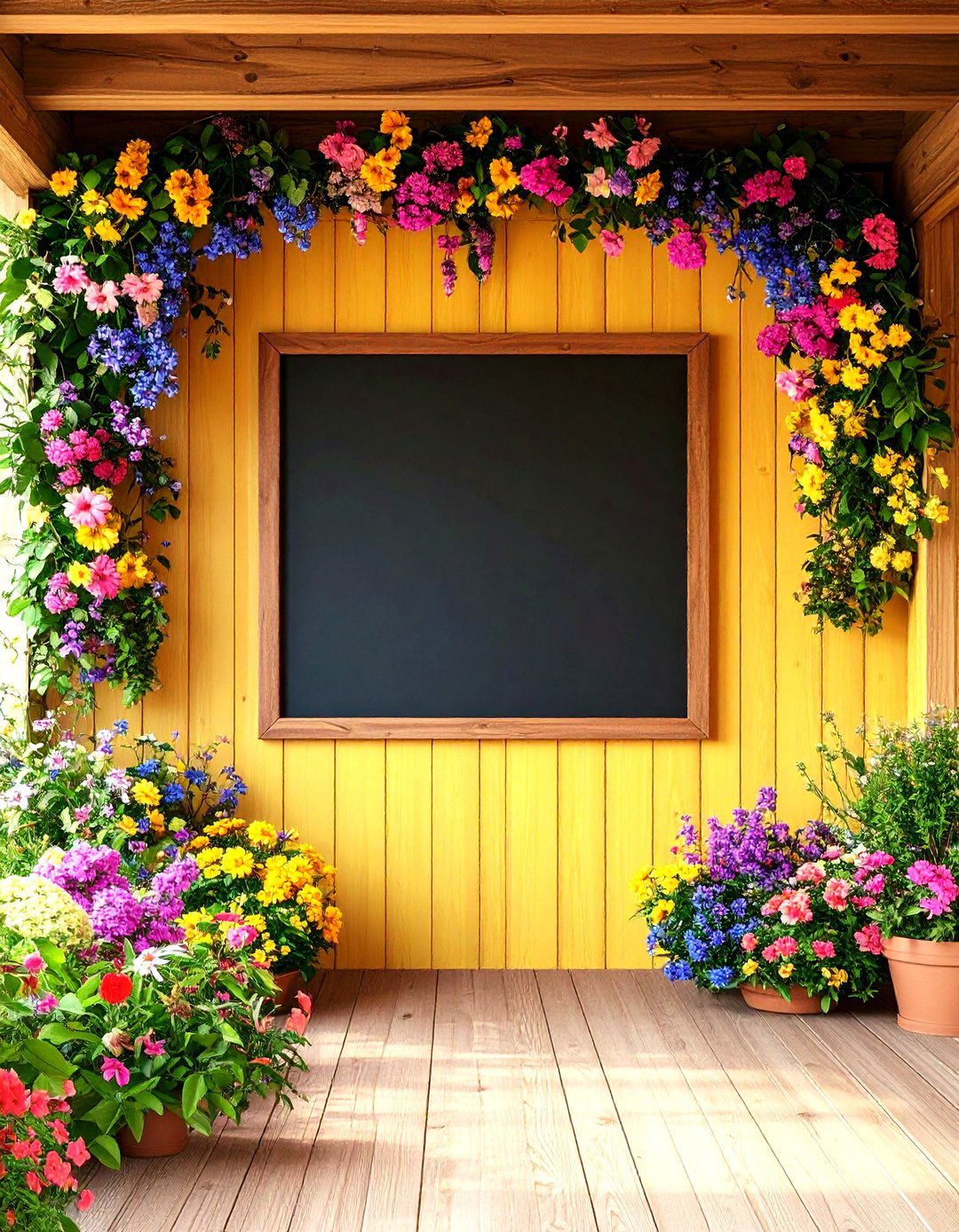
Incorporate a chalkboard-painted shiplap section for notes and family messages. Paint a central panel or the lower half of the wall in chalkboard paint over primed shiplap. Leave the grooves visible for texture, or fill them for a smooth writing surface. Frame the chalkboard area with trim that matches the surrounding shiplap. This interactive element adds personalization and utility, perfect for busy households coordinating schedules. Keep chalk and erasers in a small shelf or basket nearby for convenience.
20. Shiplap and Board-and-Batten Combination
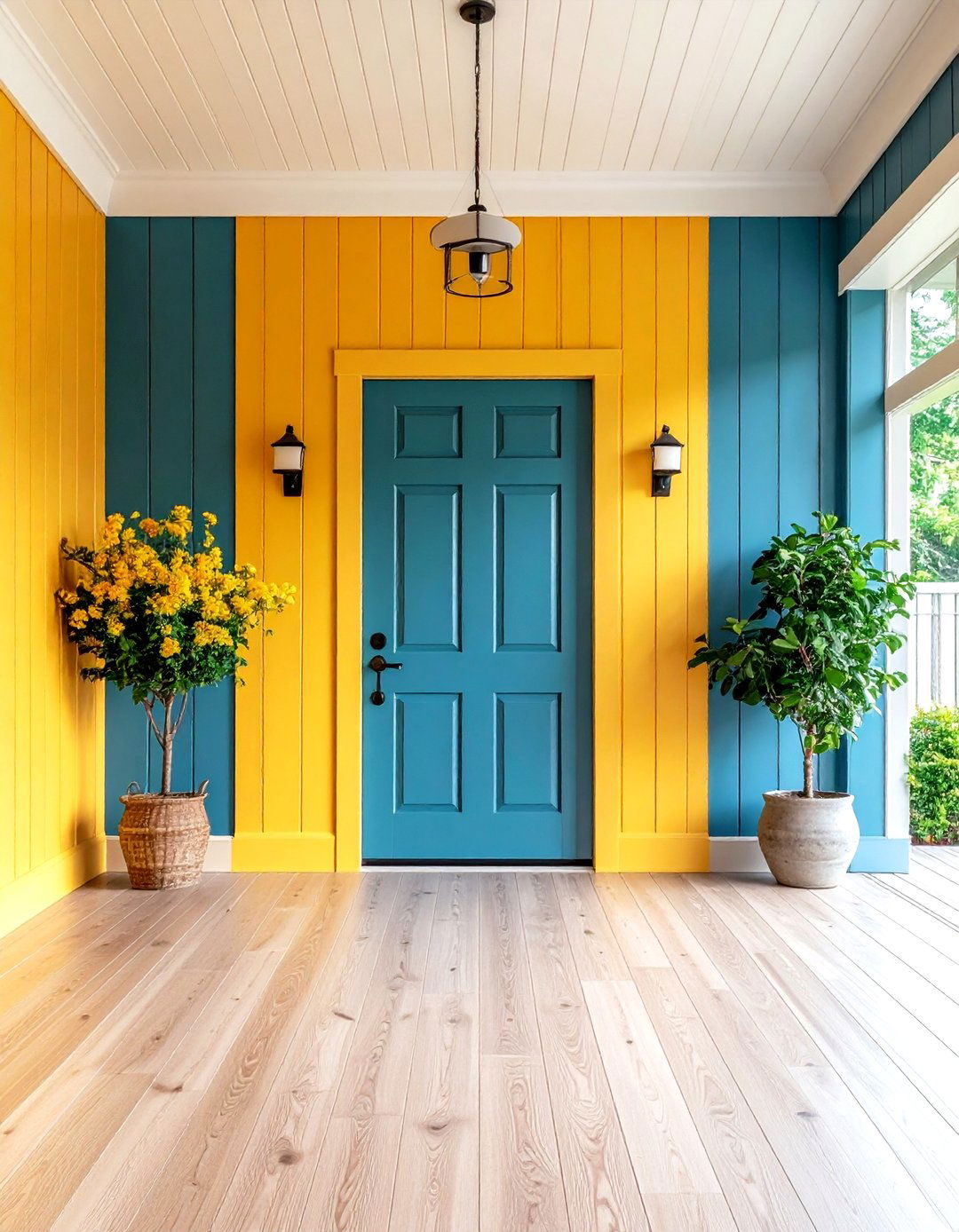
Merge two paneling styles by installing shiplap on the upper portion of the wall and board-and-batten wainscoting below. The vertical battens contrast the horizontal shiplap, creating a layered architectural feature. Paint both treatments in the same color for cohesion, or use complementary hues for distinction. This hybrid wall design works well in traditional or farmhouse settings, offering both texture and formality. The durable lower panels protect the wall, while the shiplap above adds warmth and visual interest.
Conclusion:
From classic white accent walls to innovative lighting integrations and hidden storage solutions, shiplap offers endless possibilities for entryway design. By varying board orientations, finishes, and complementary elements—such as benches, mirrors, and hook systems—you can tailor each installation to your home’s style and practical needs. Whether you seek a minimalist modern look or a cozy rustic feel, one of these 20 shiplap entryway ideas can help you create a welcoming first impression that combines beauty and functionality.


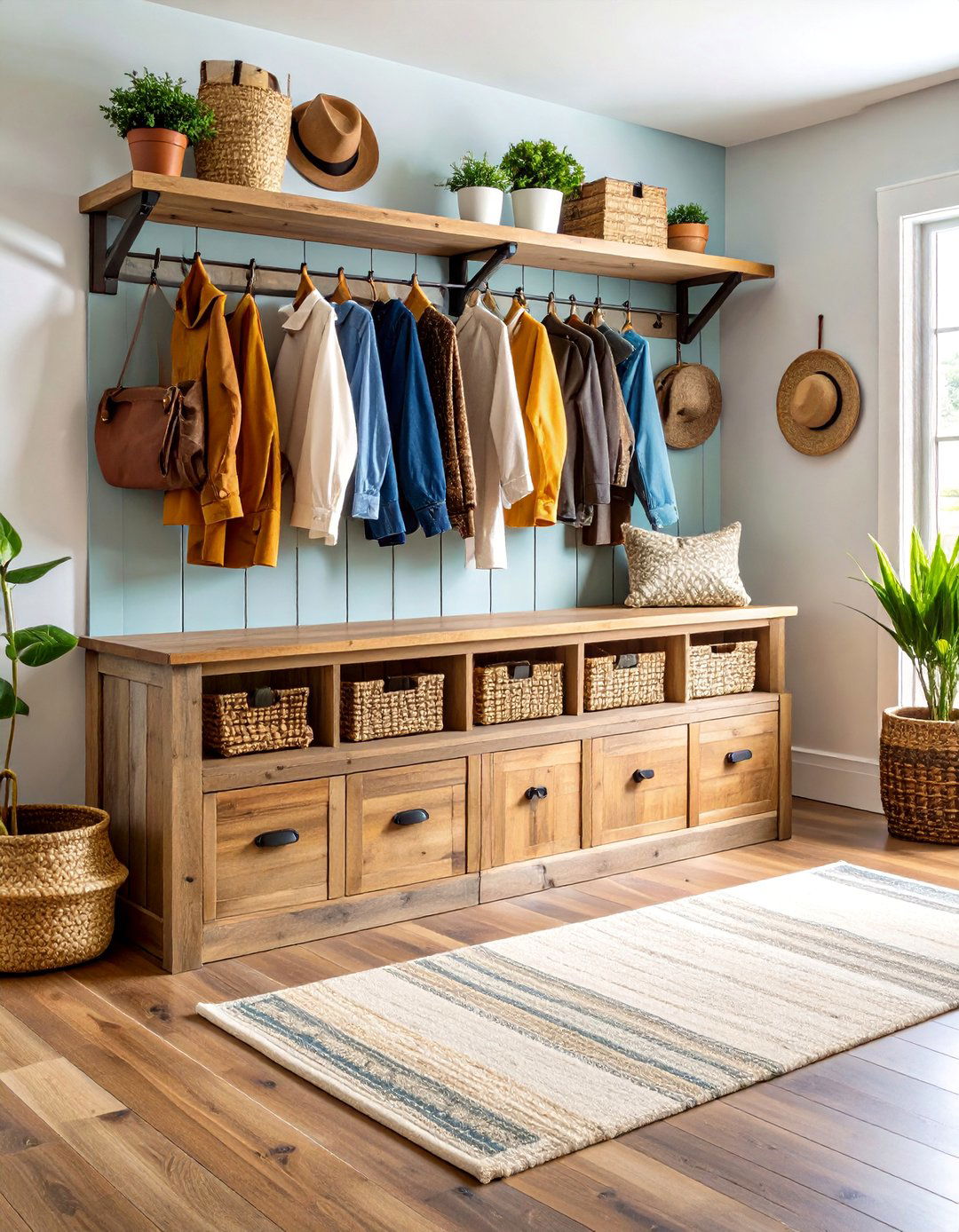
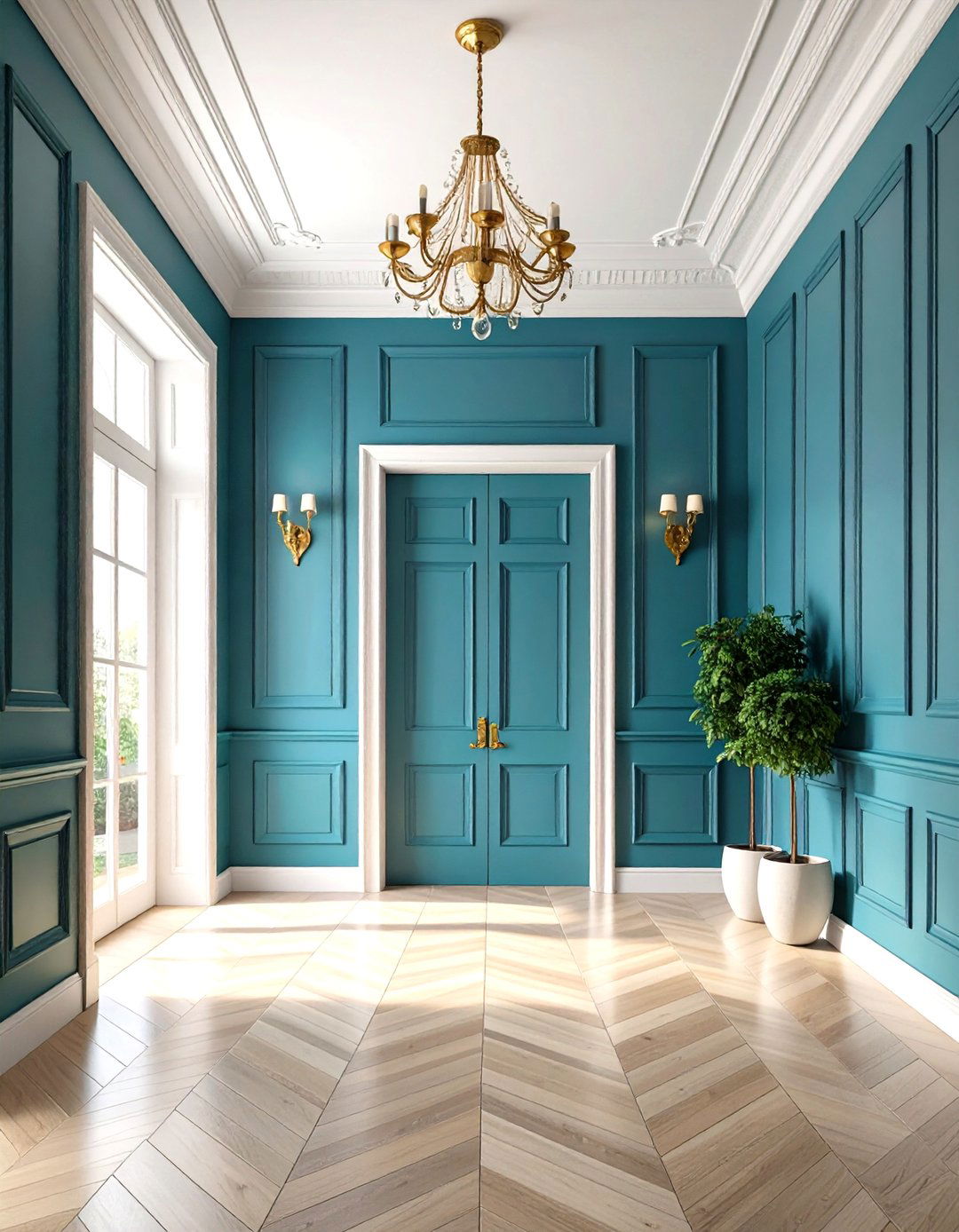
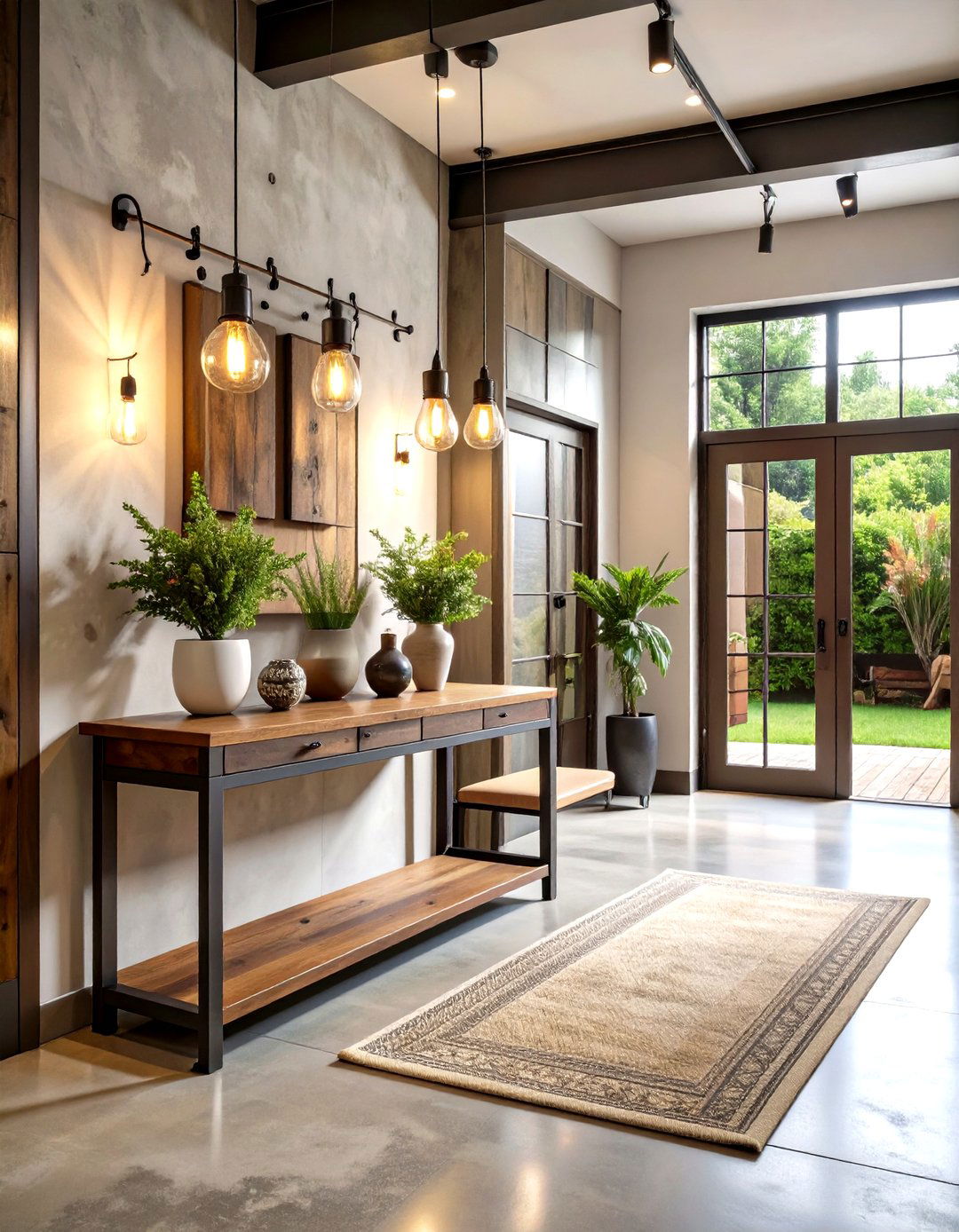
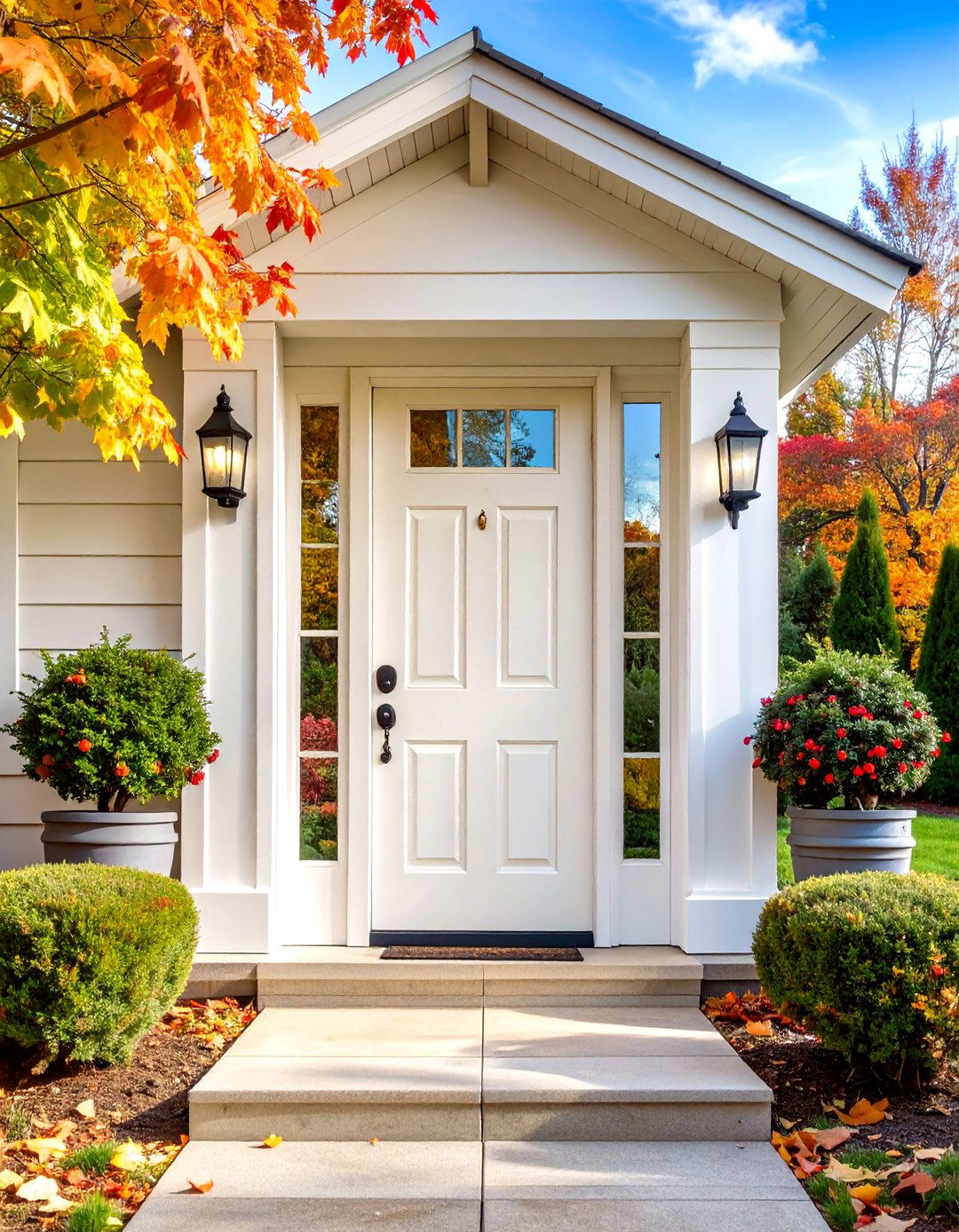
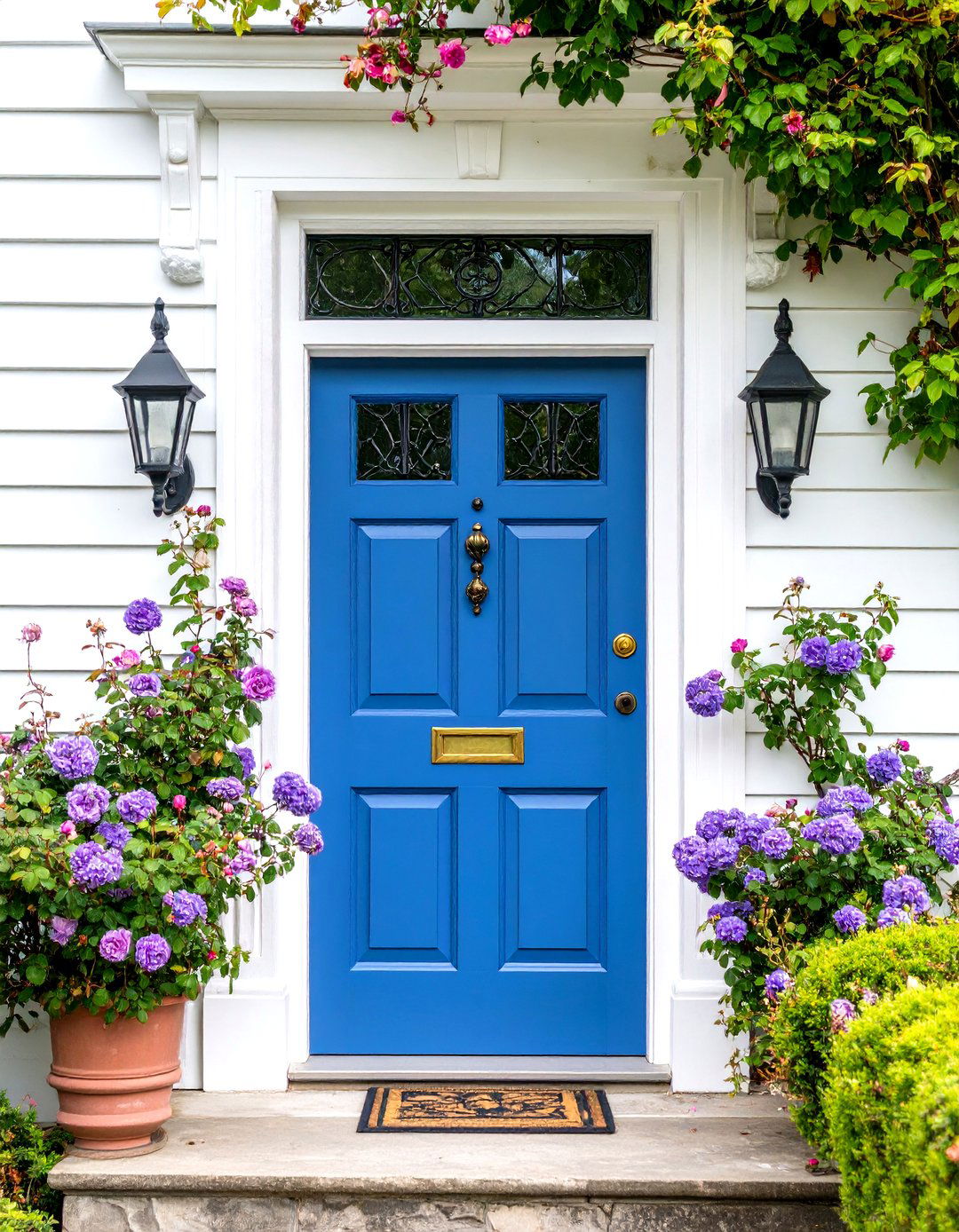

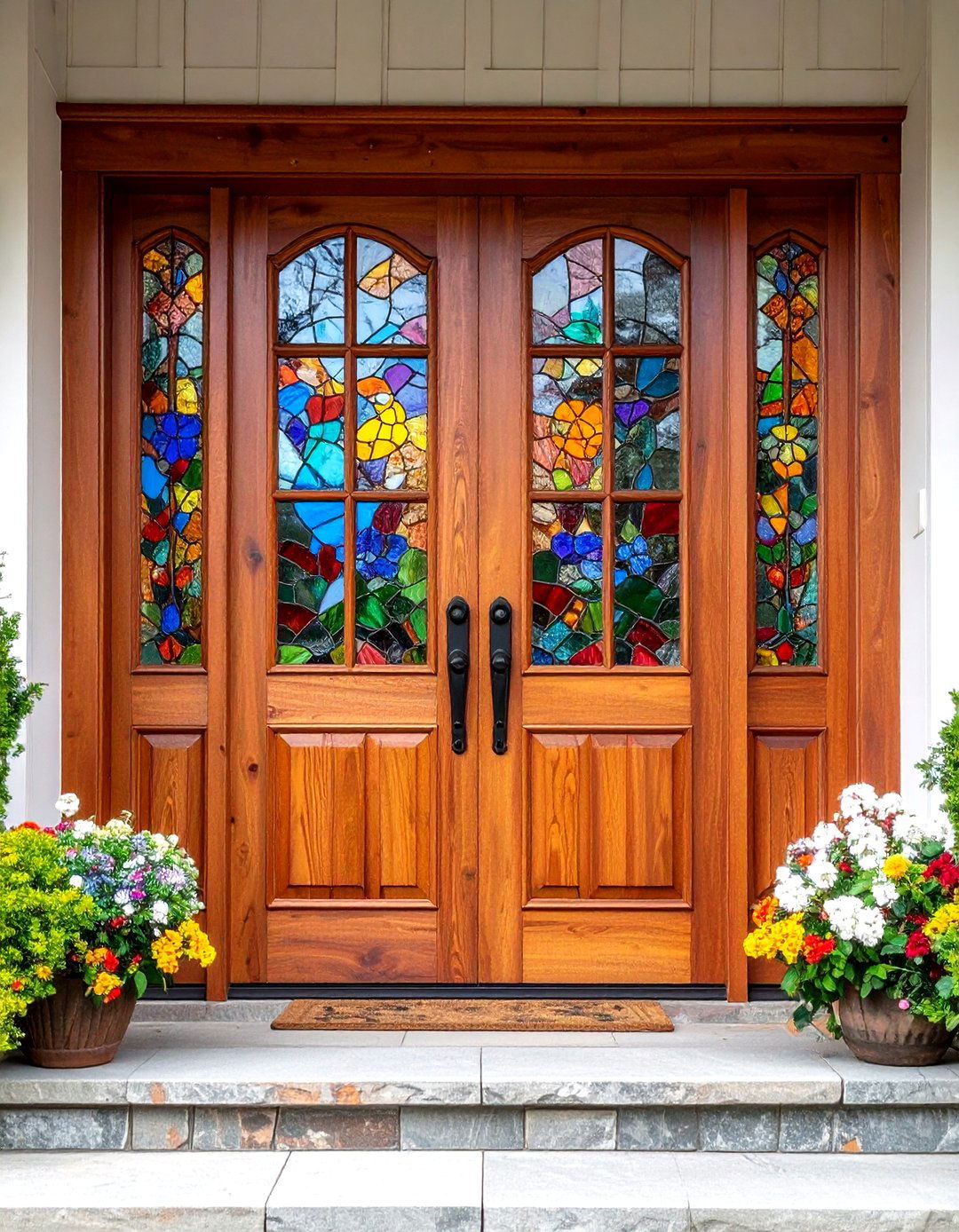
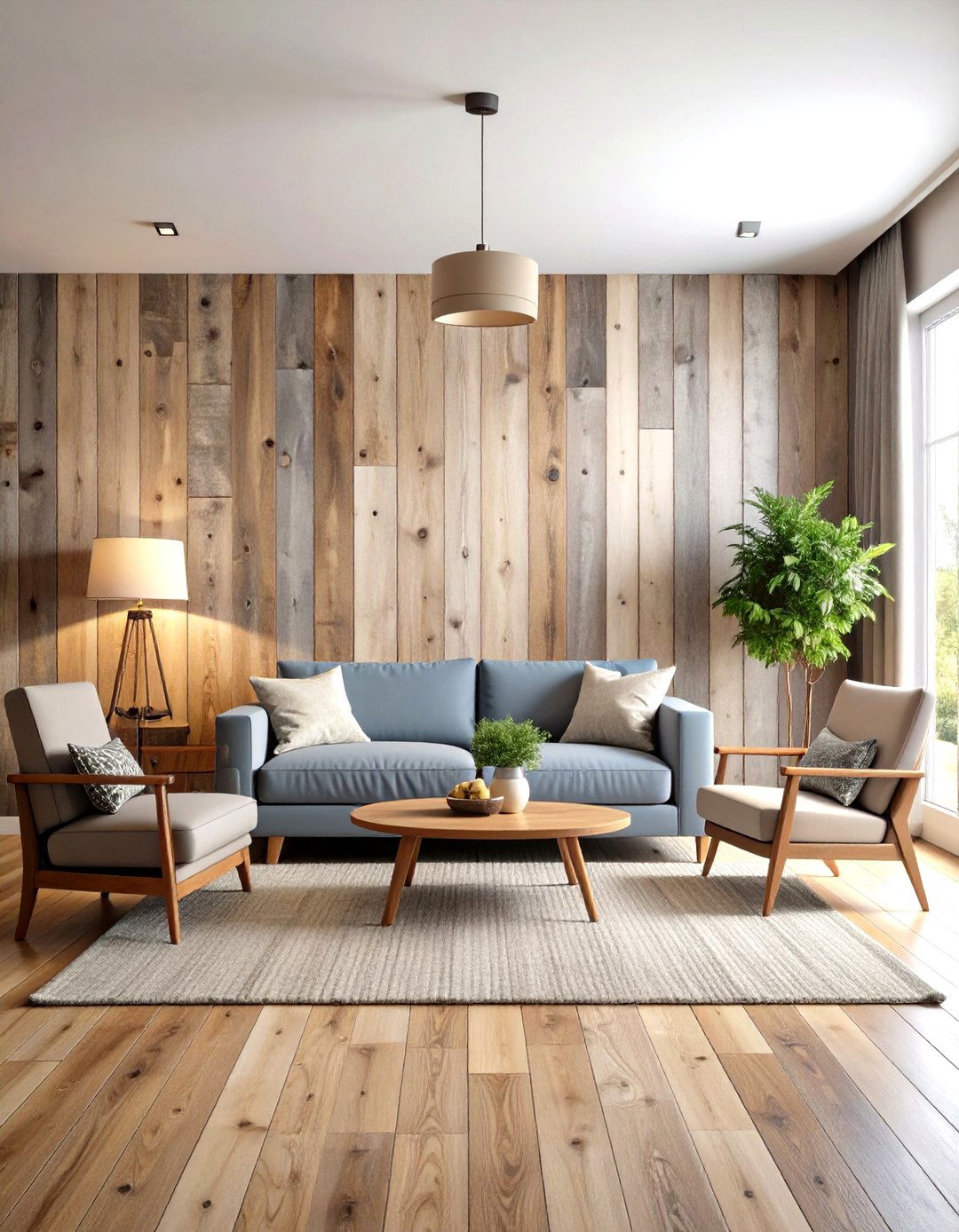

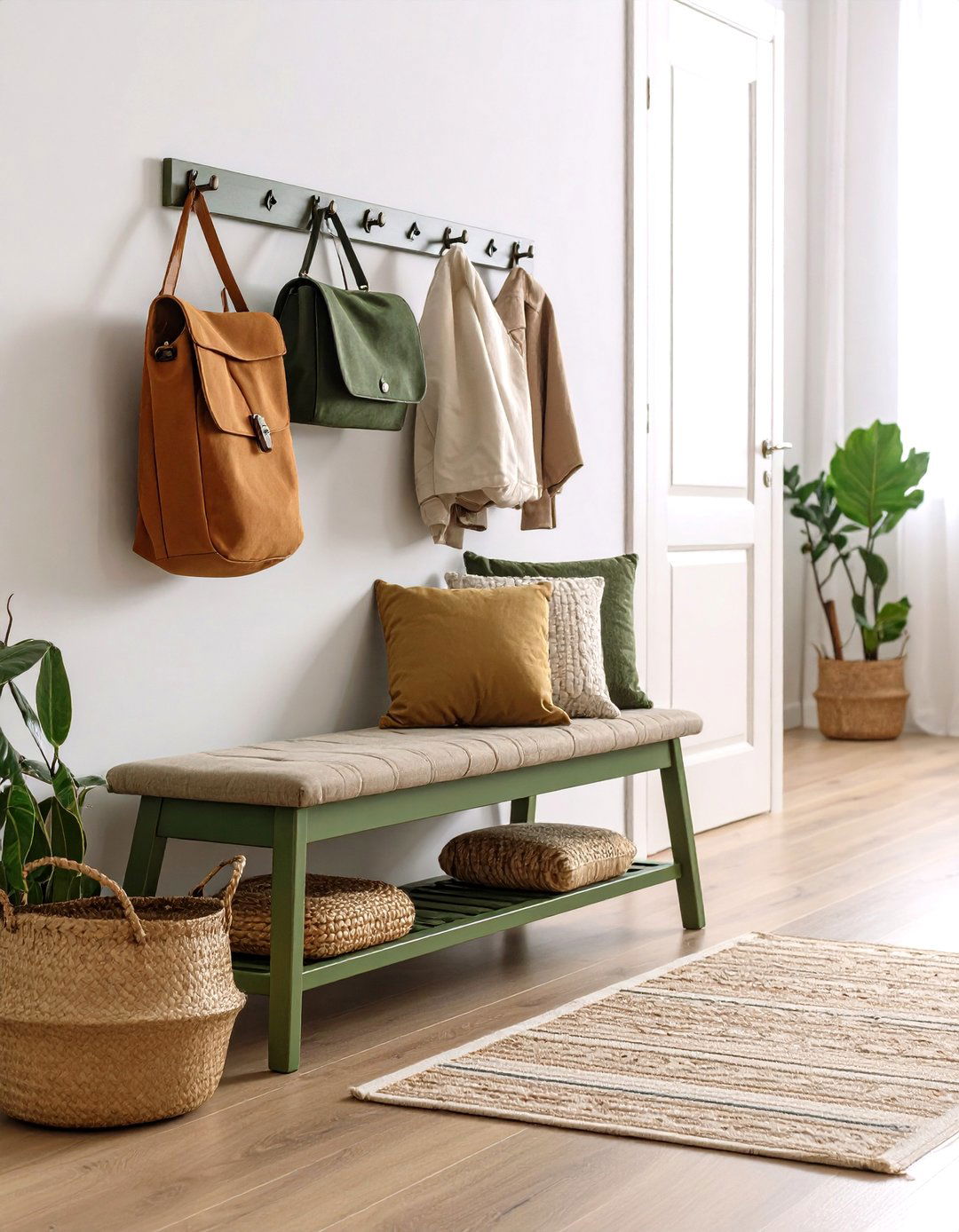
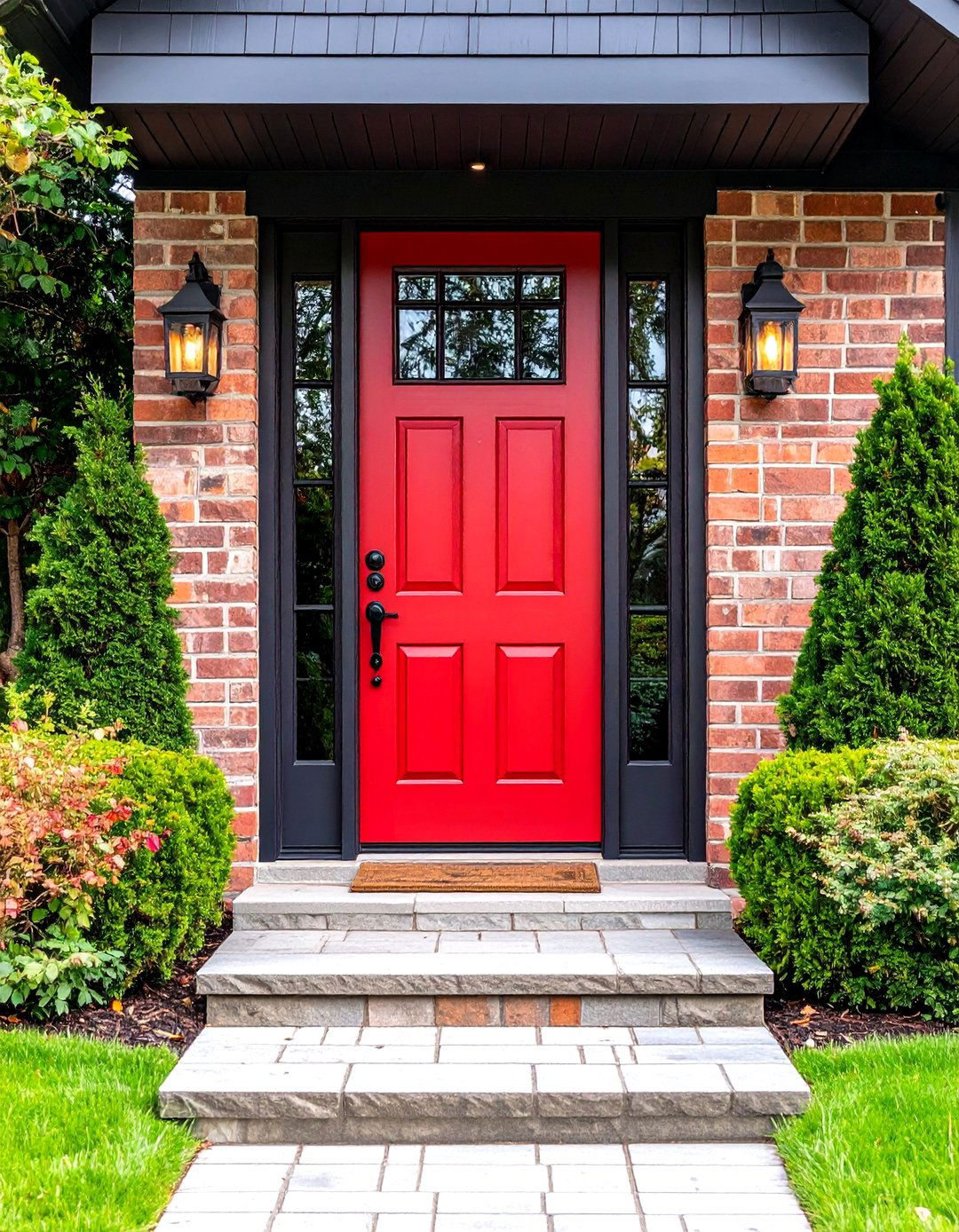

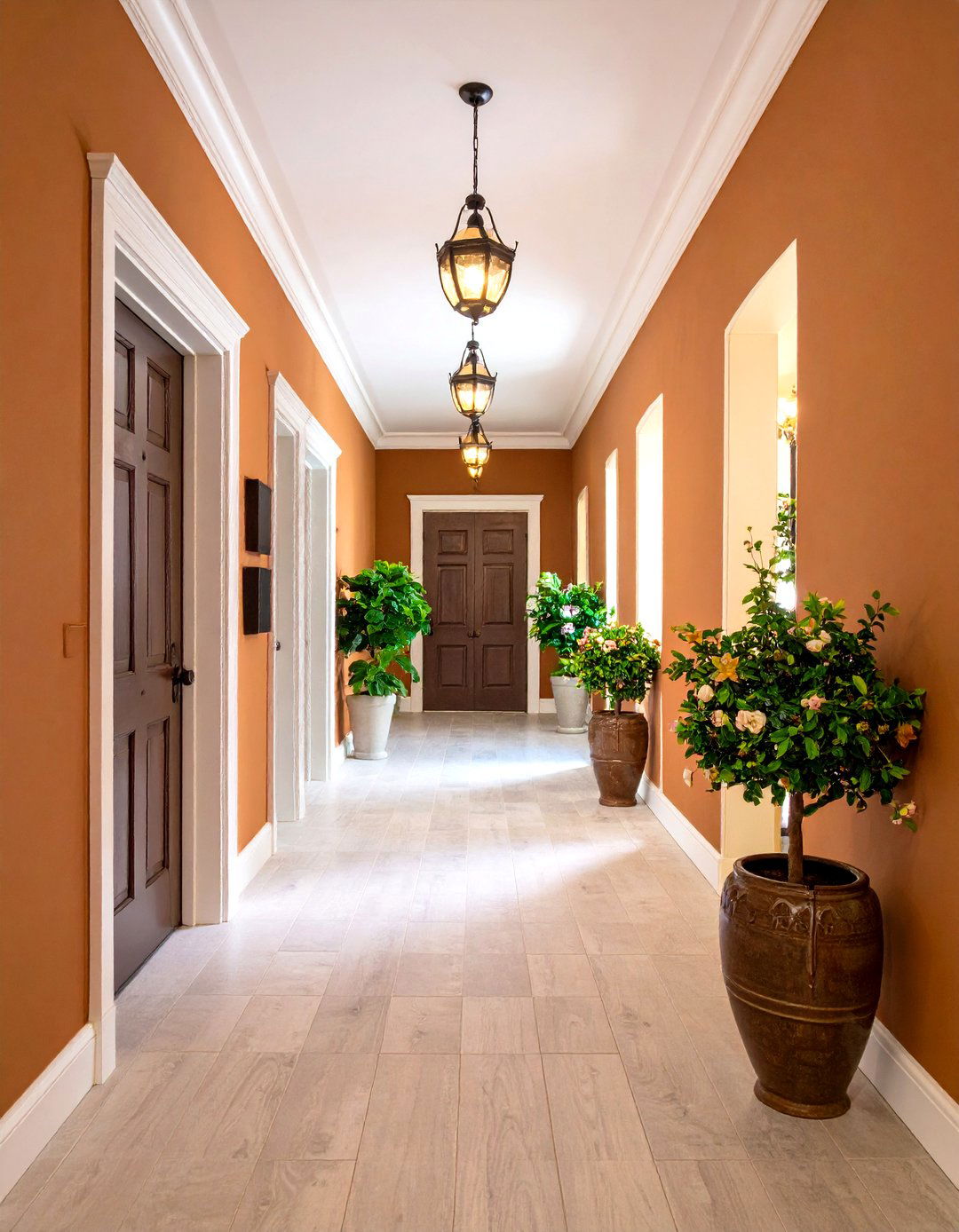
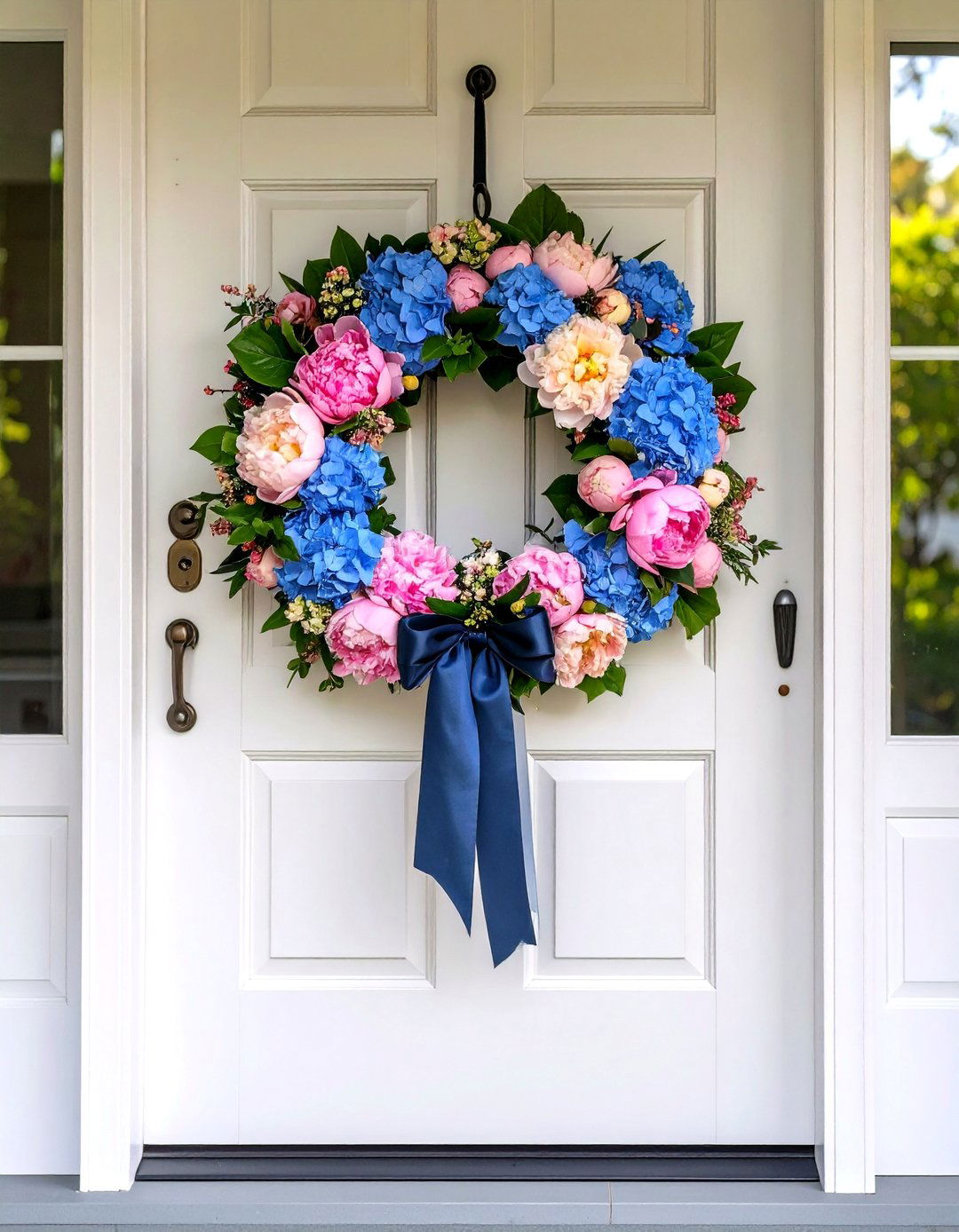
Leave a Reply